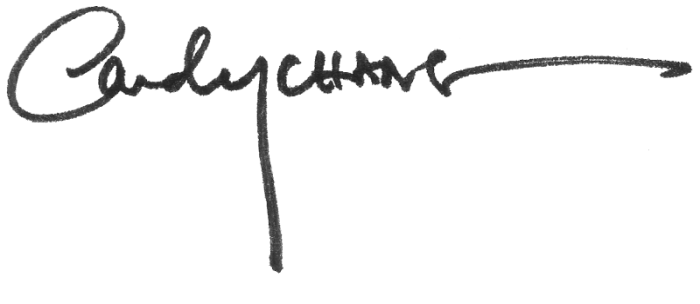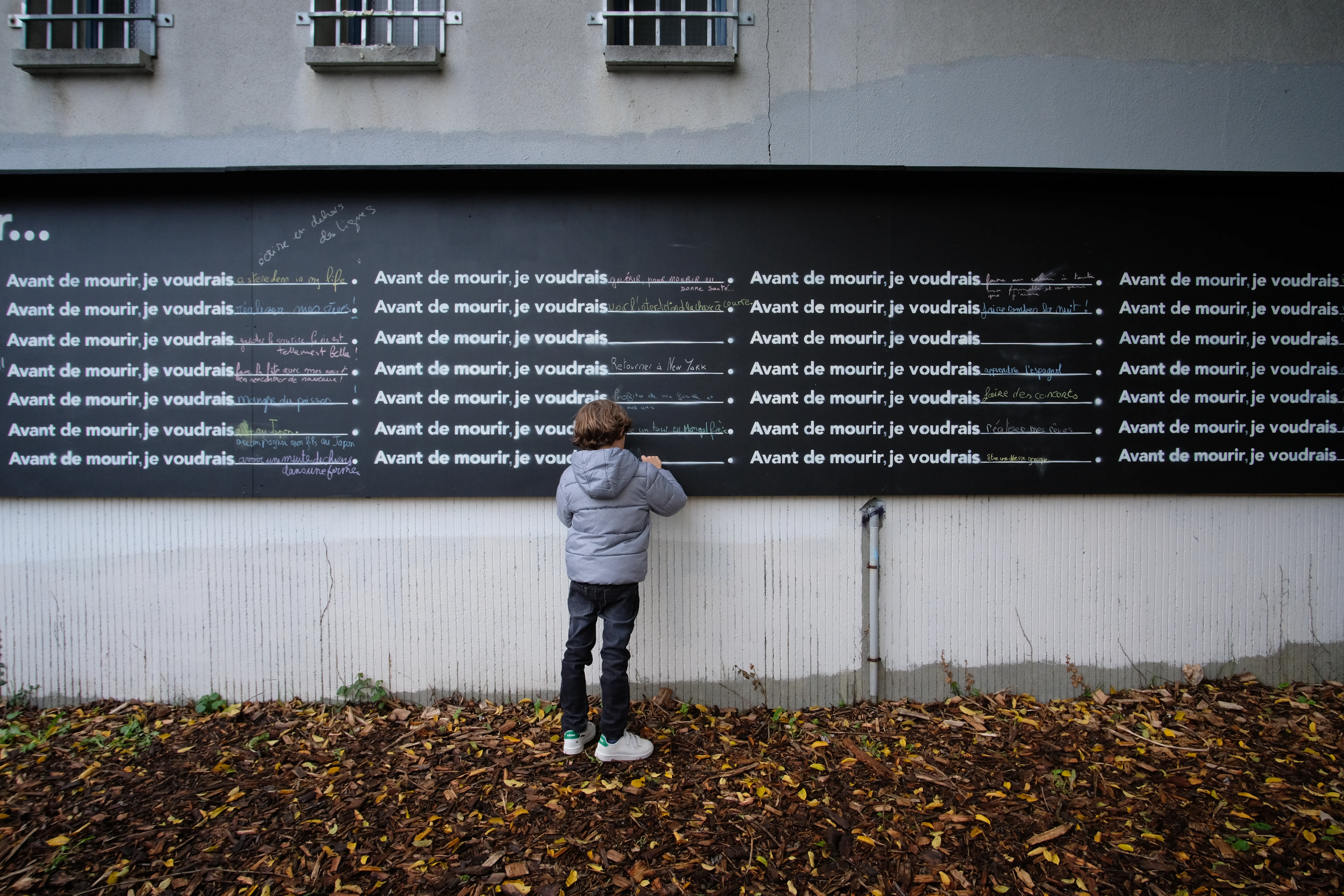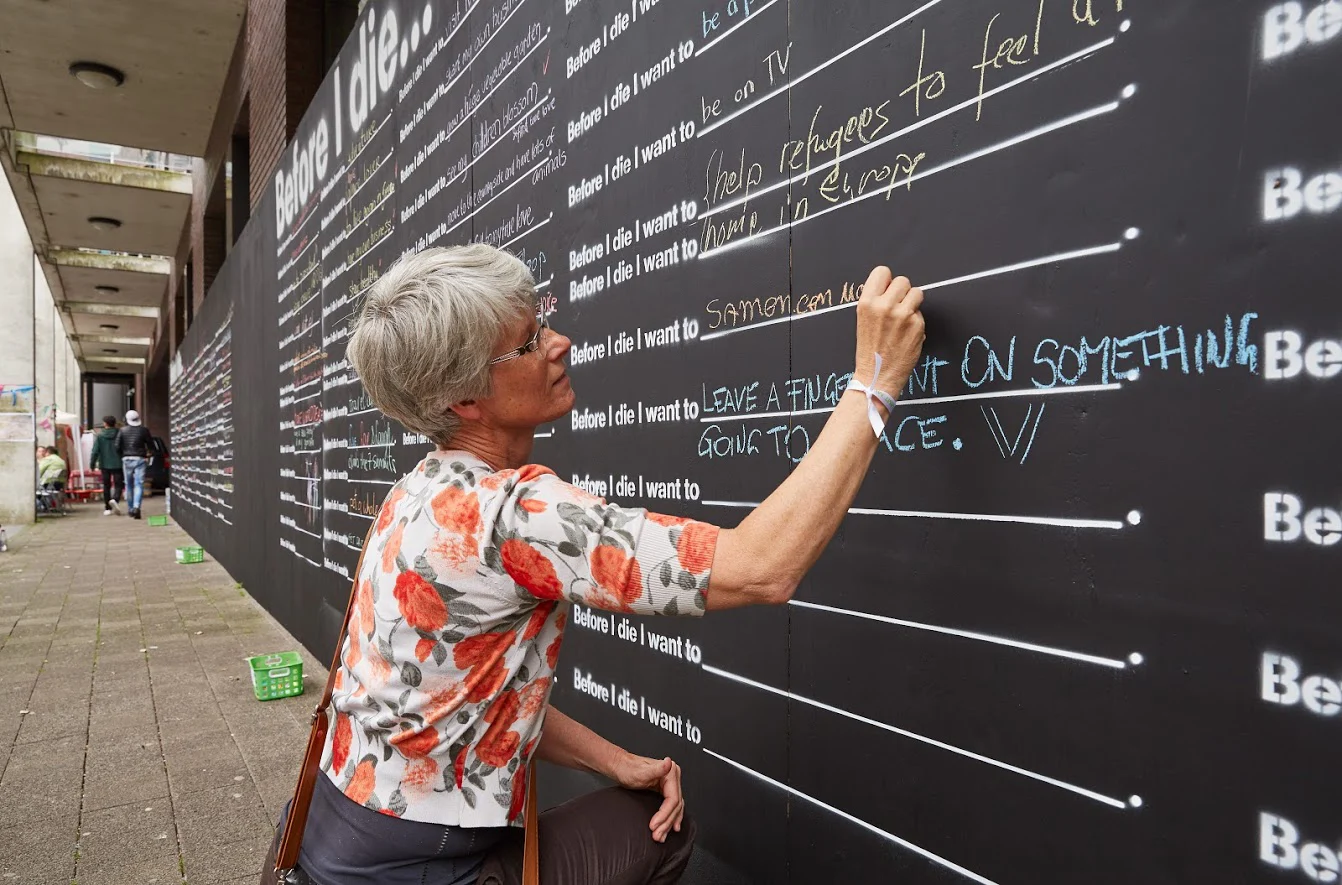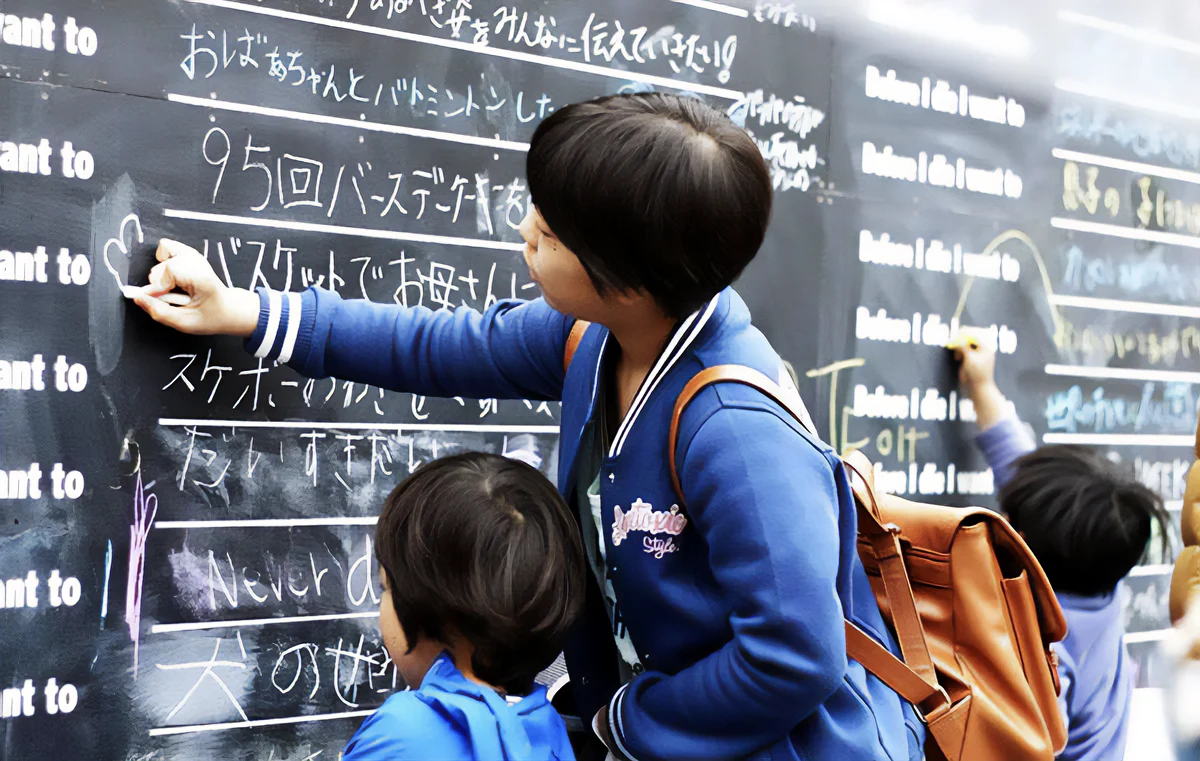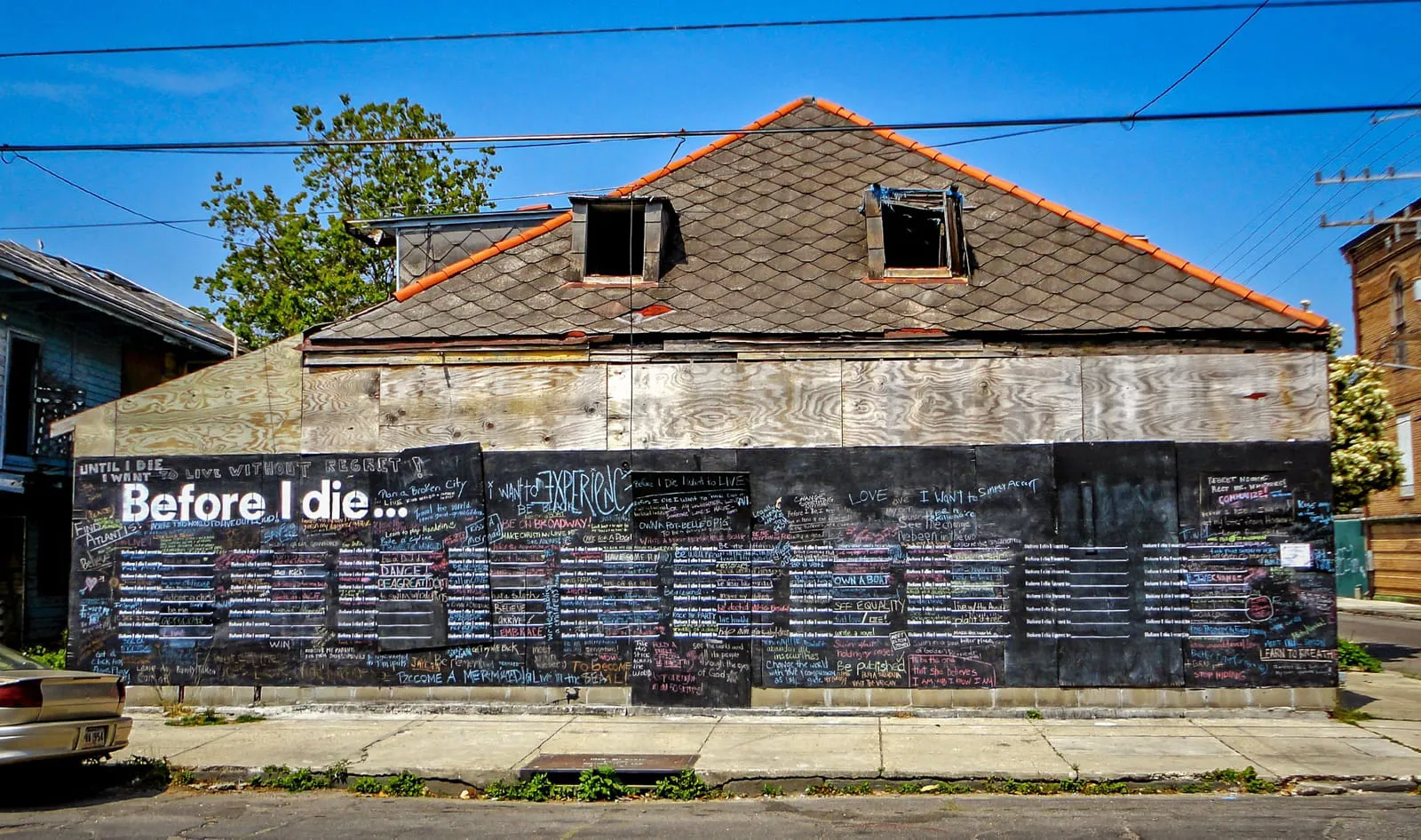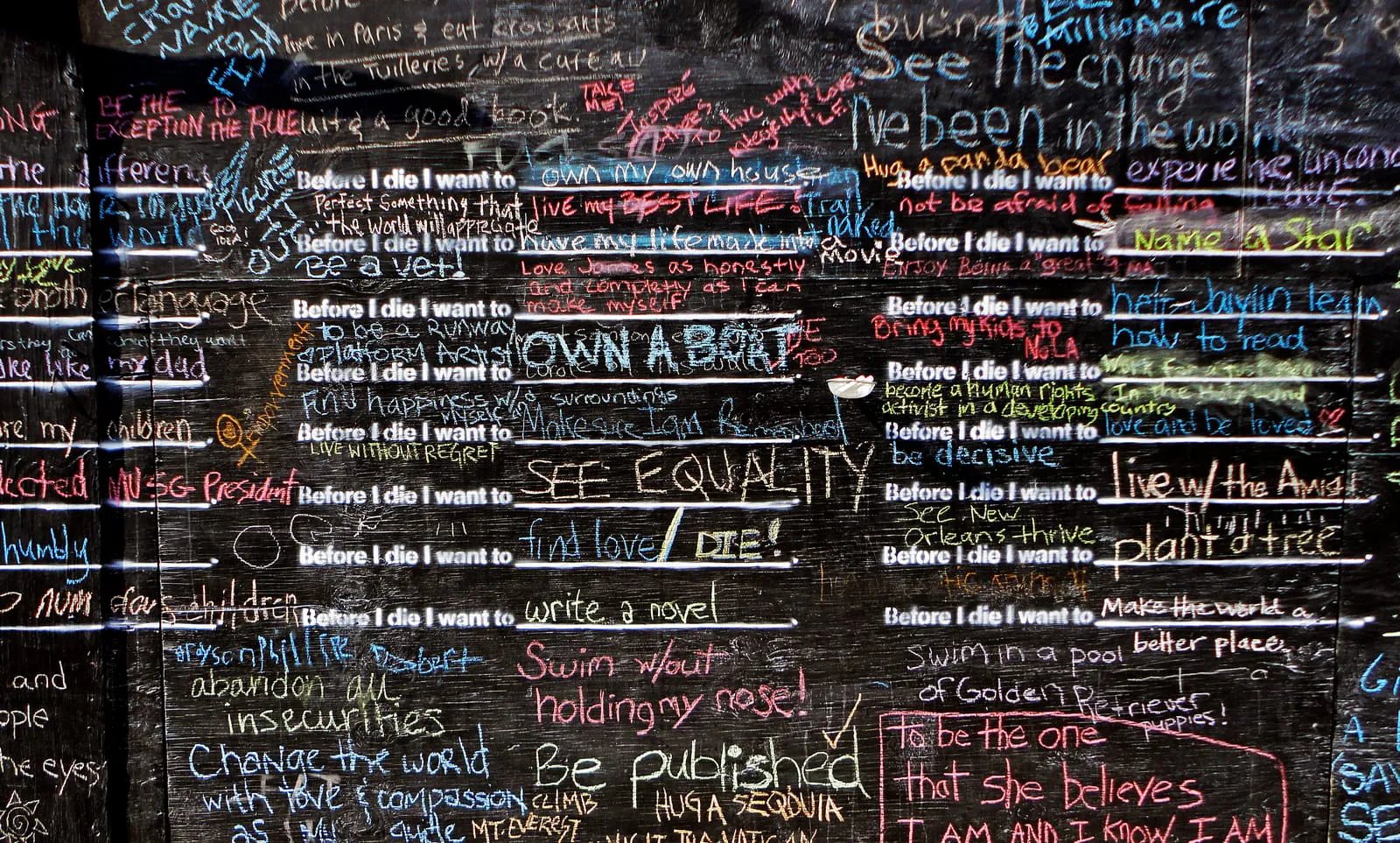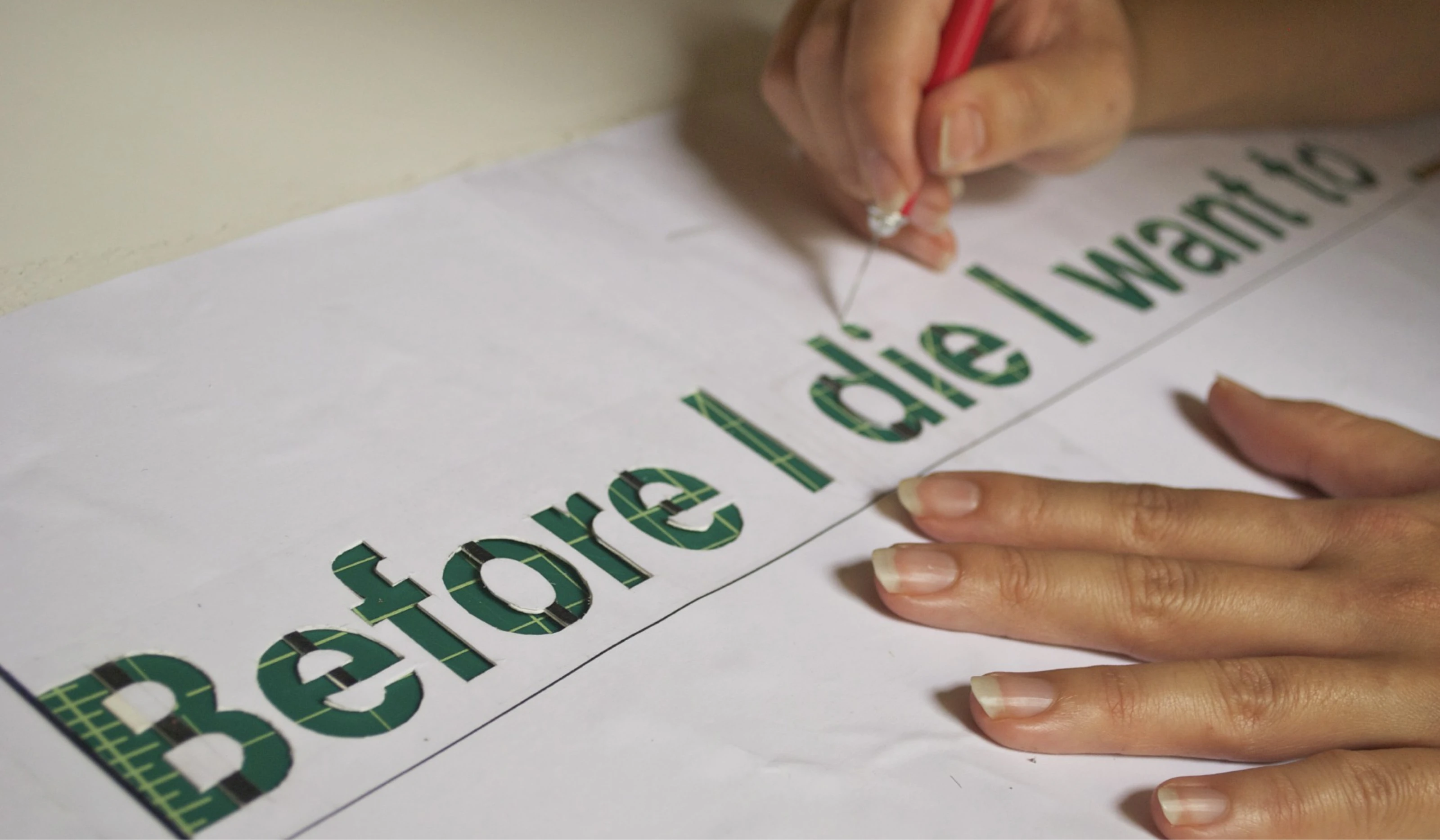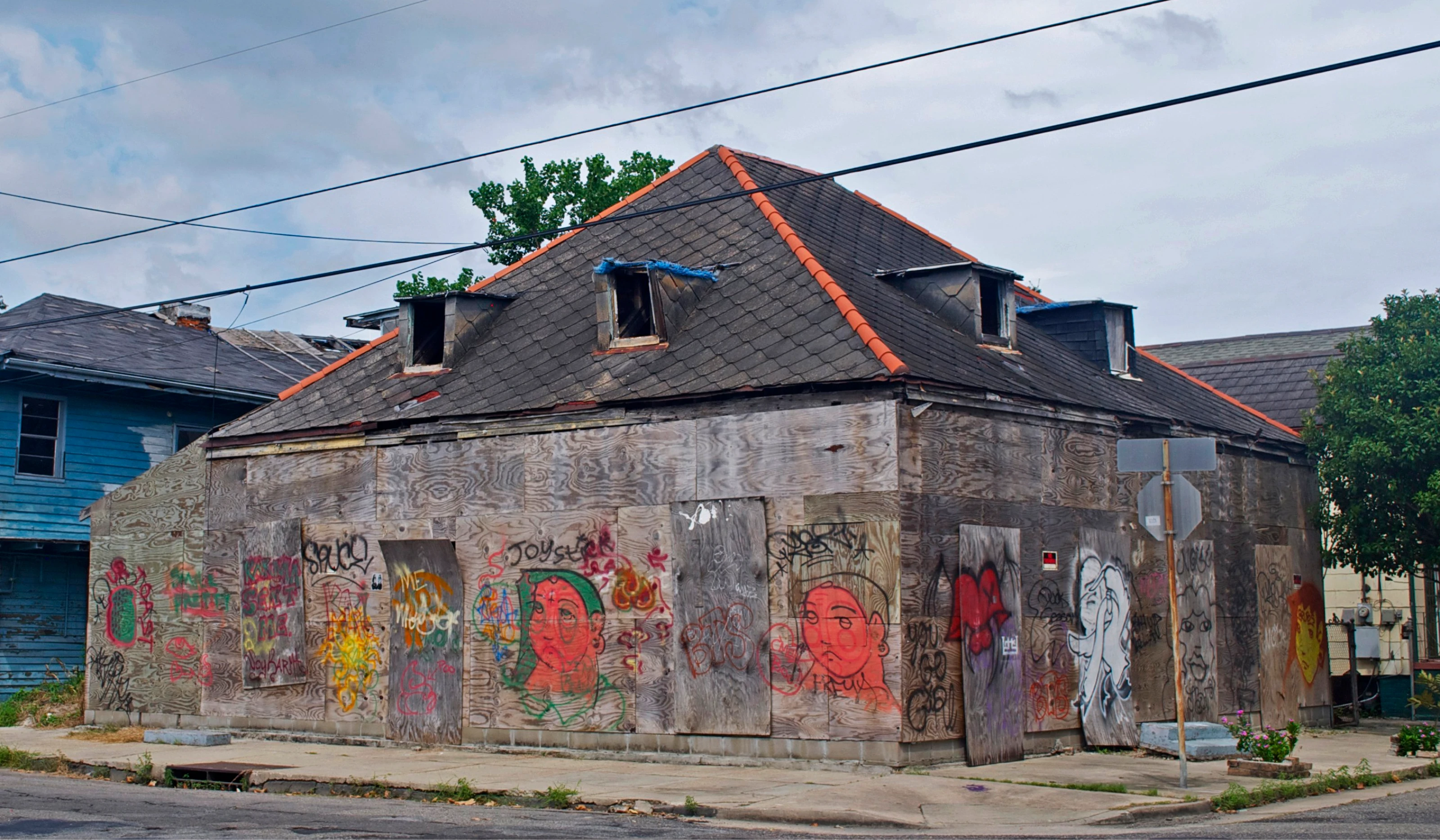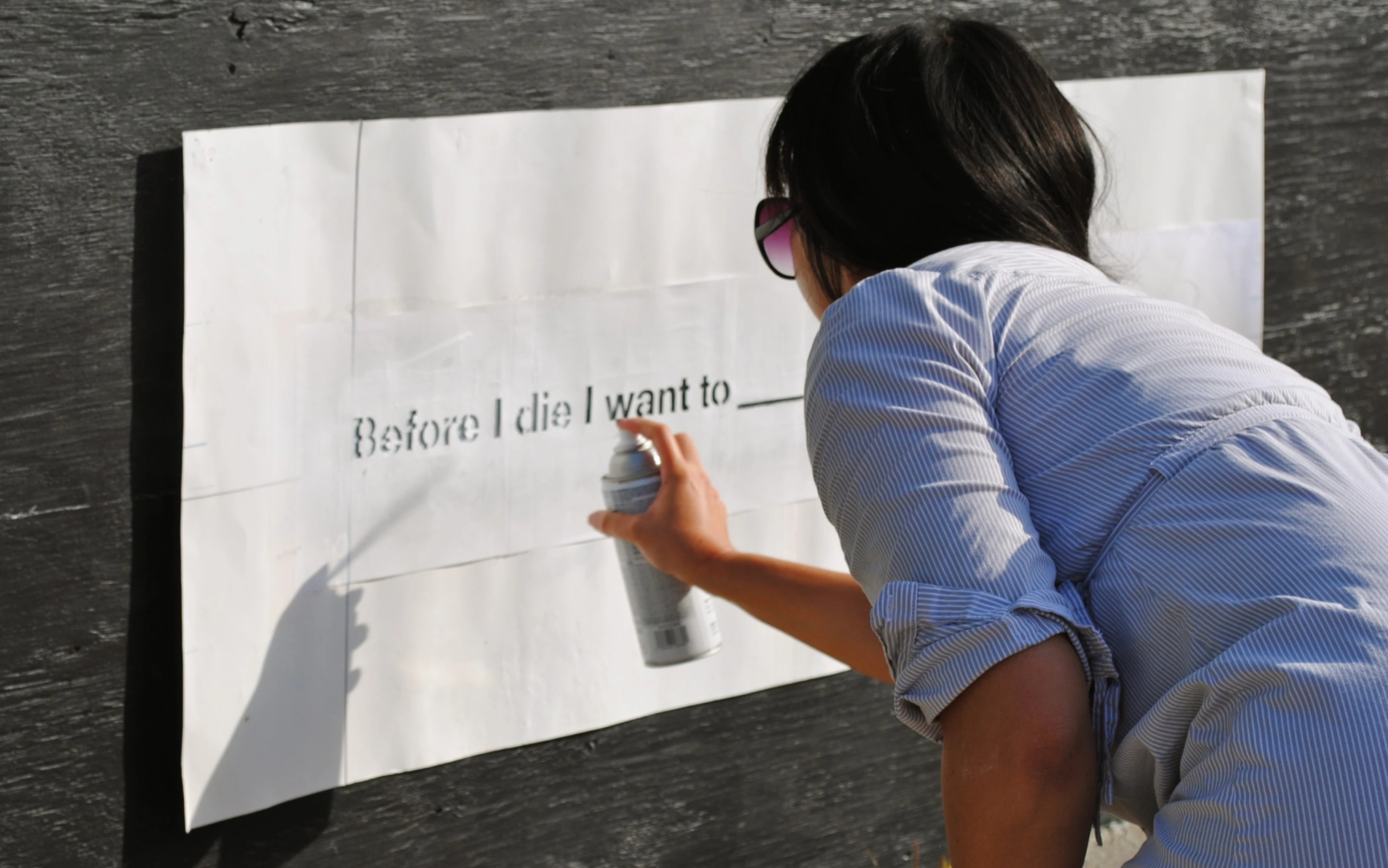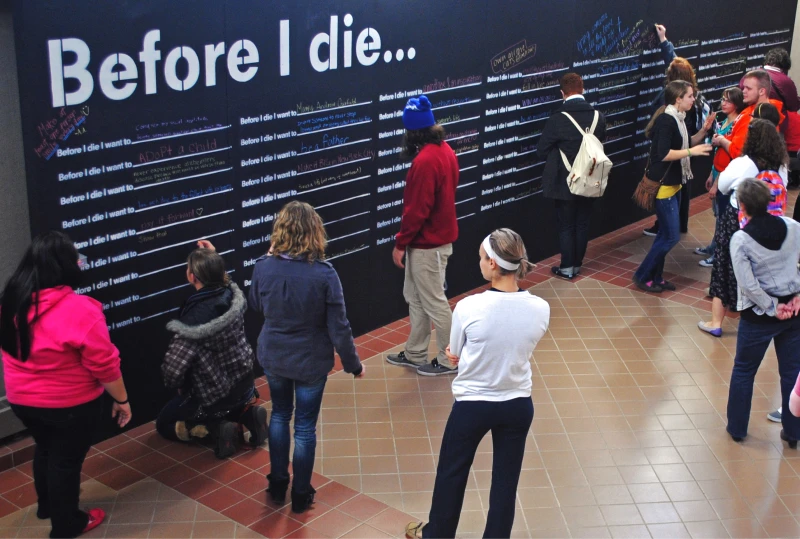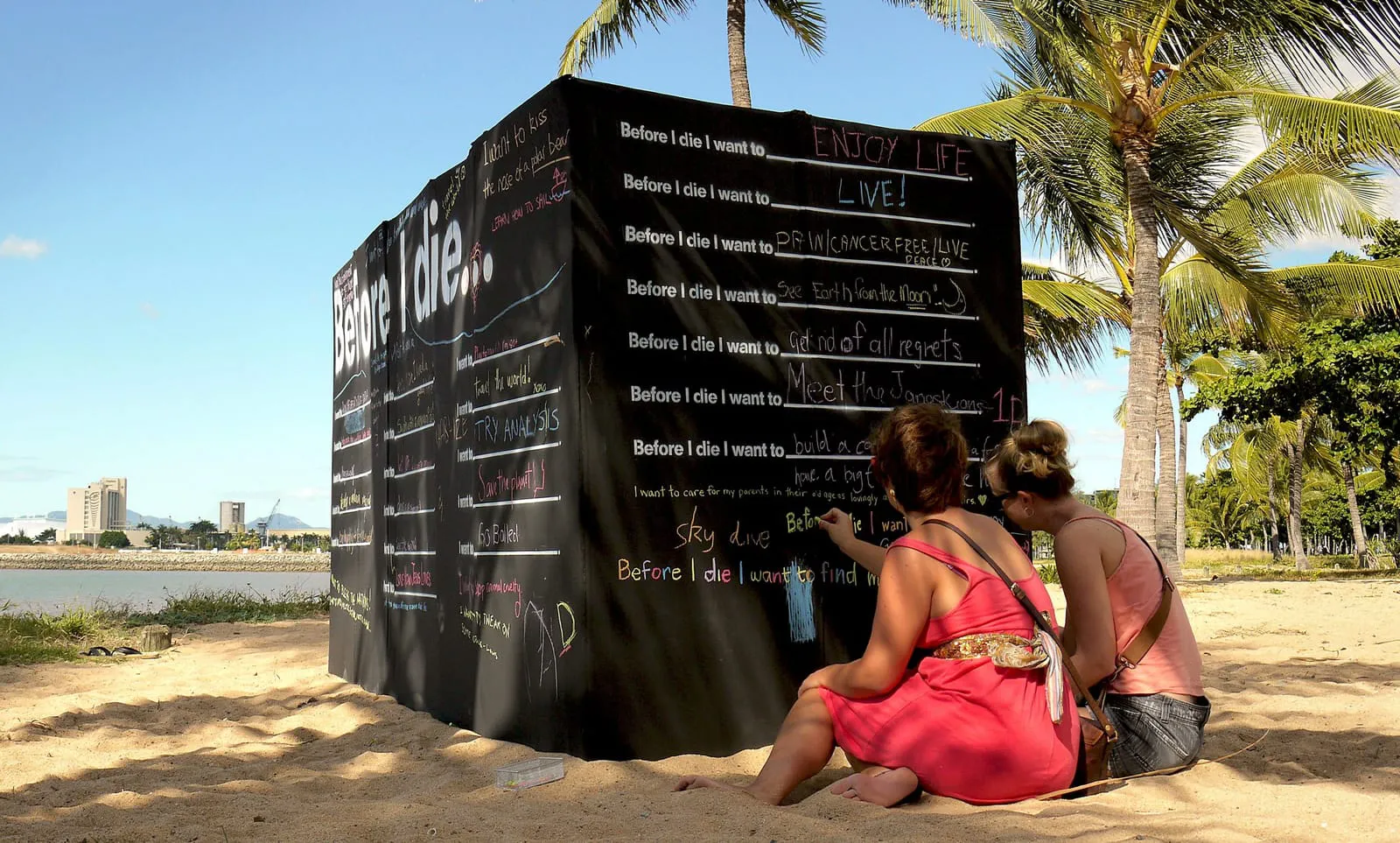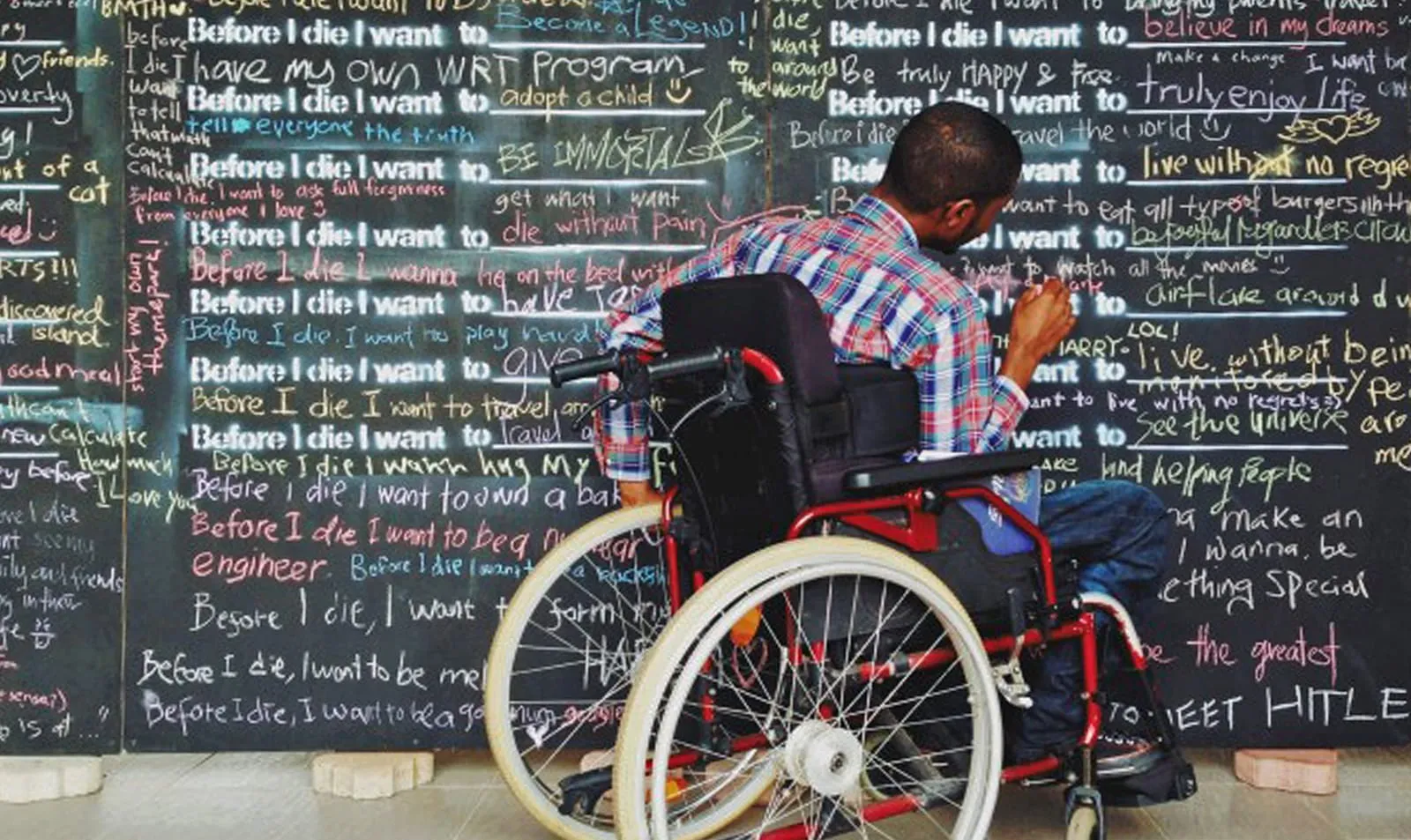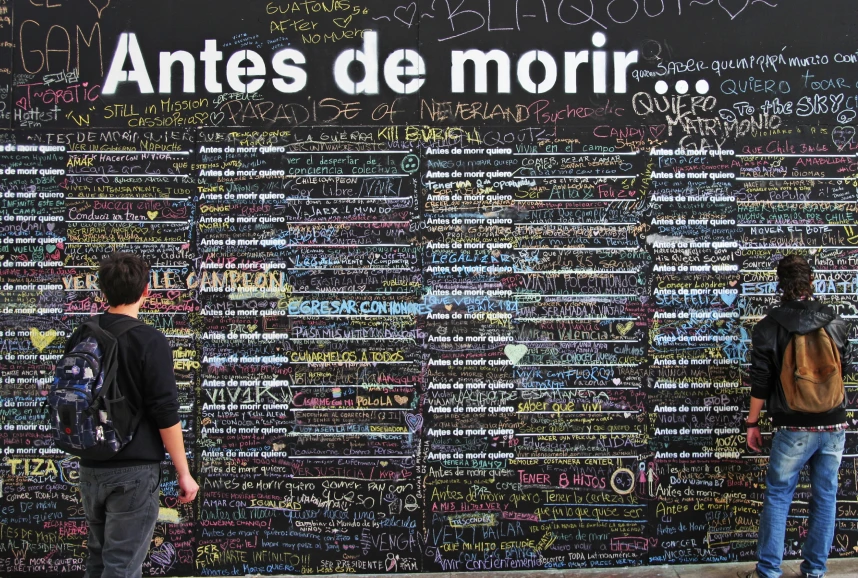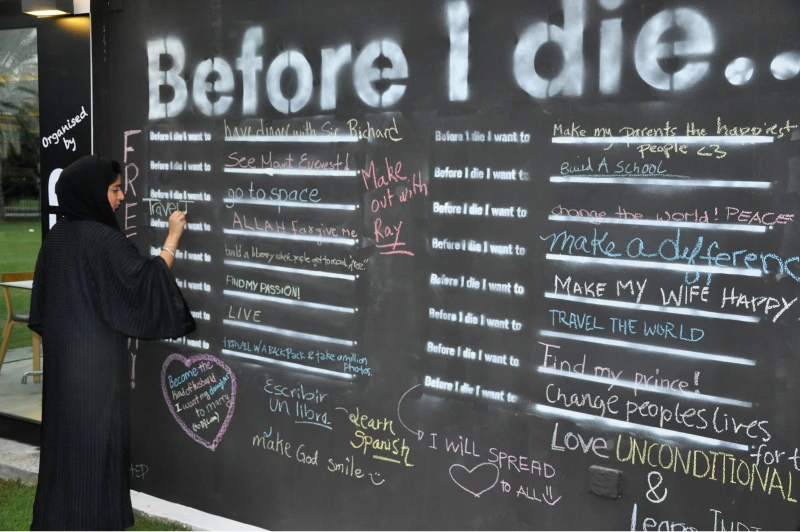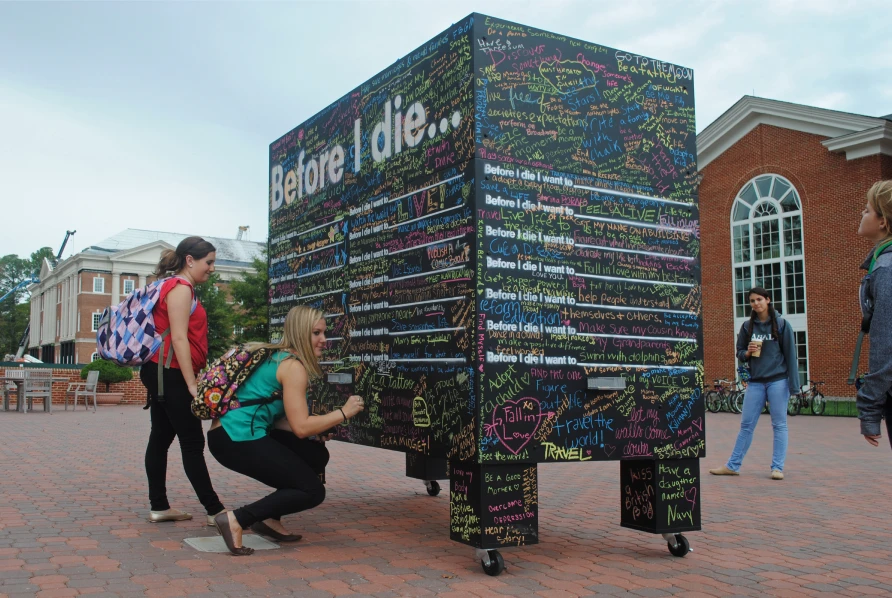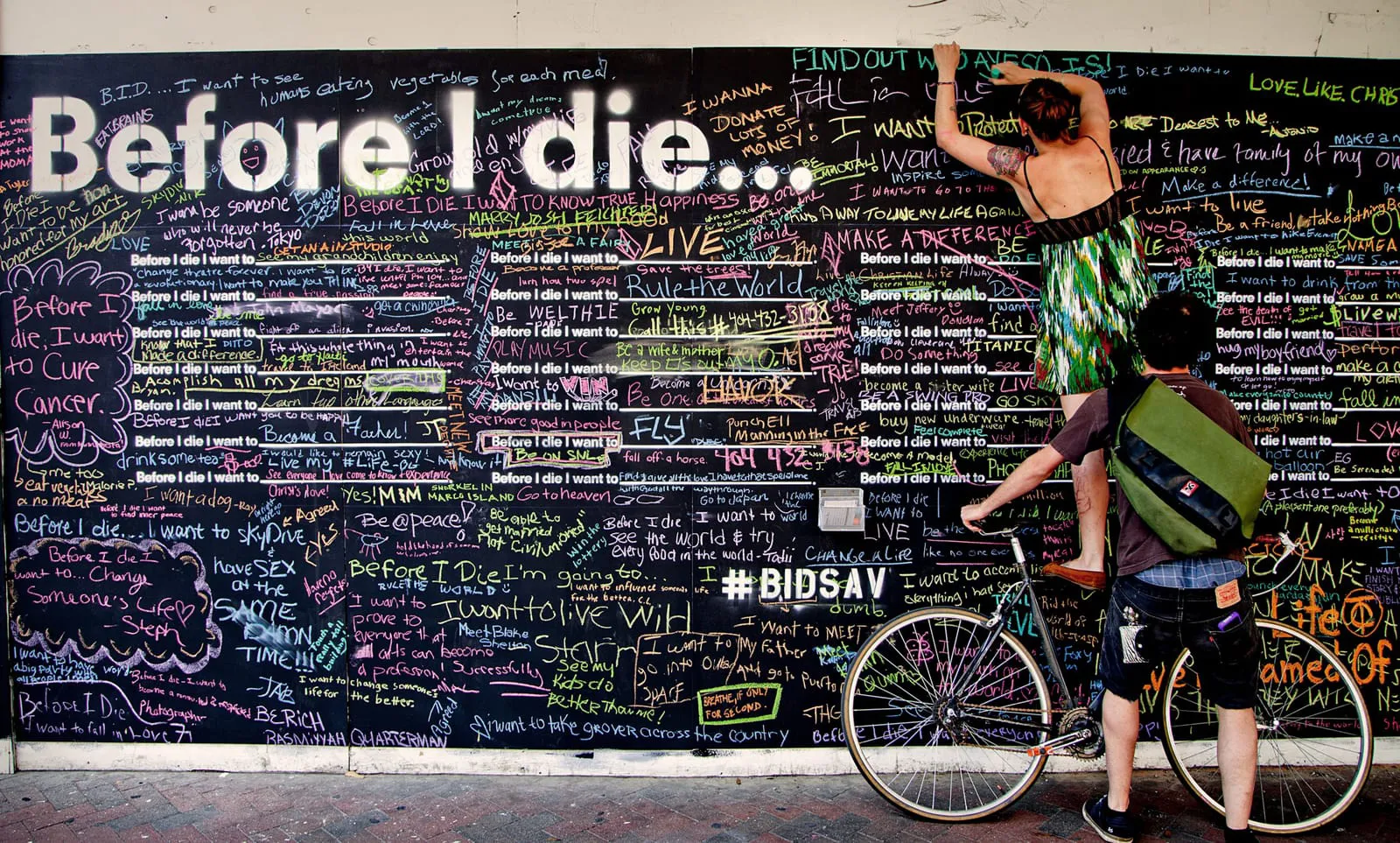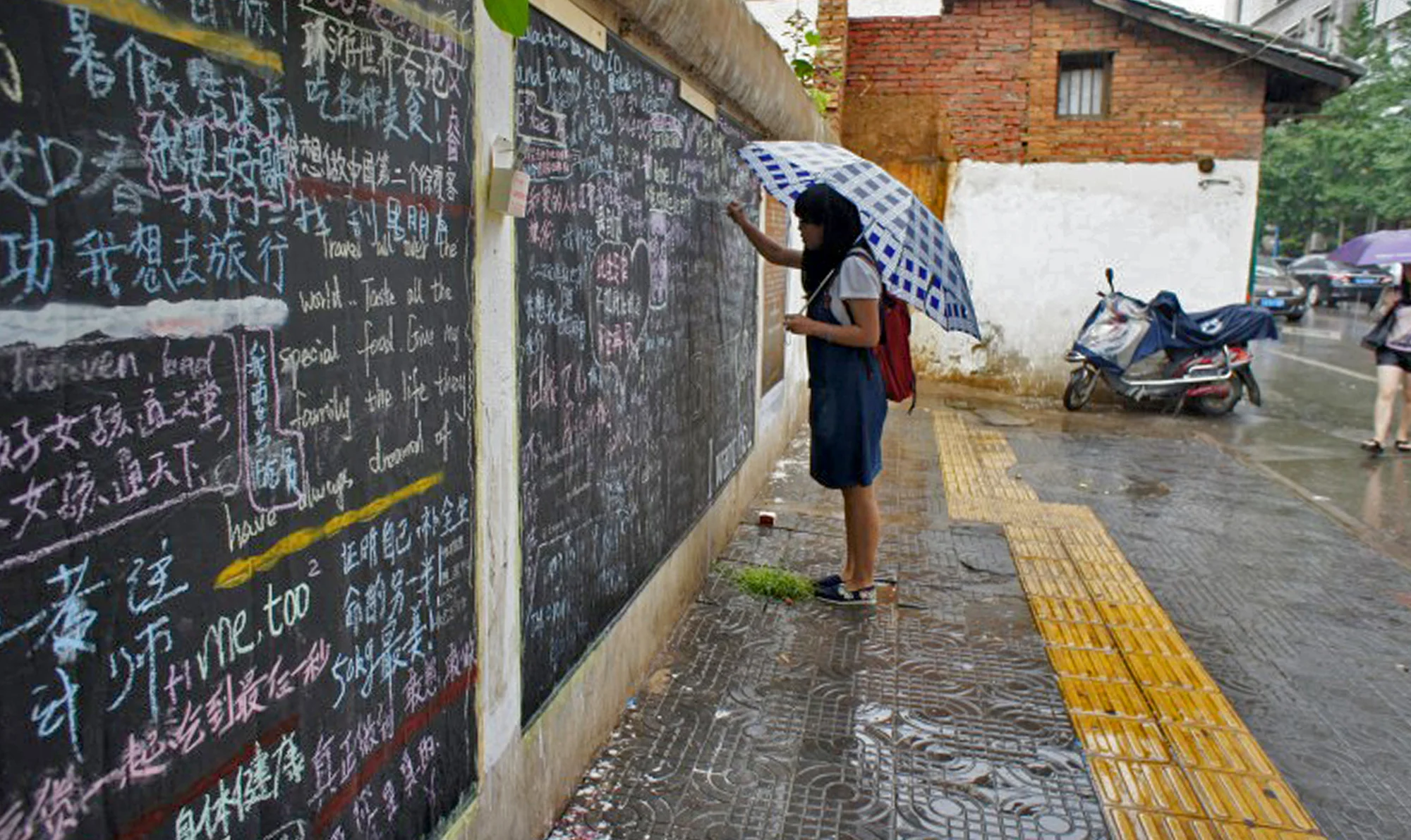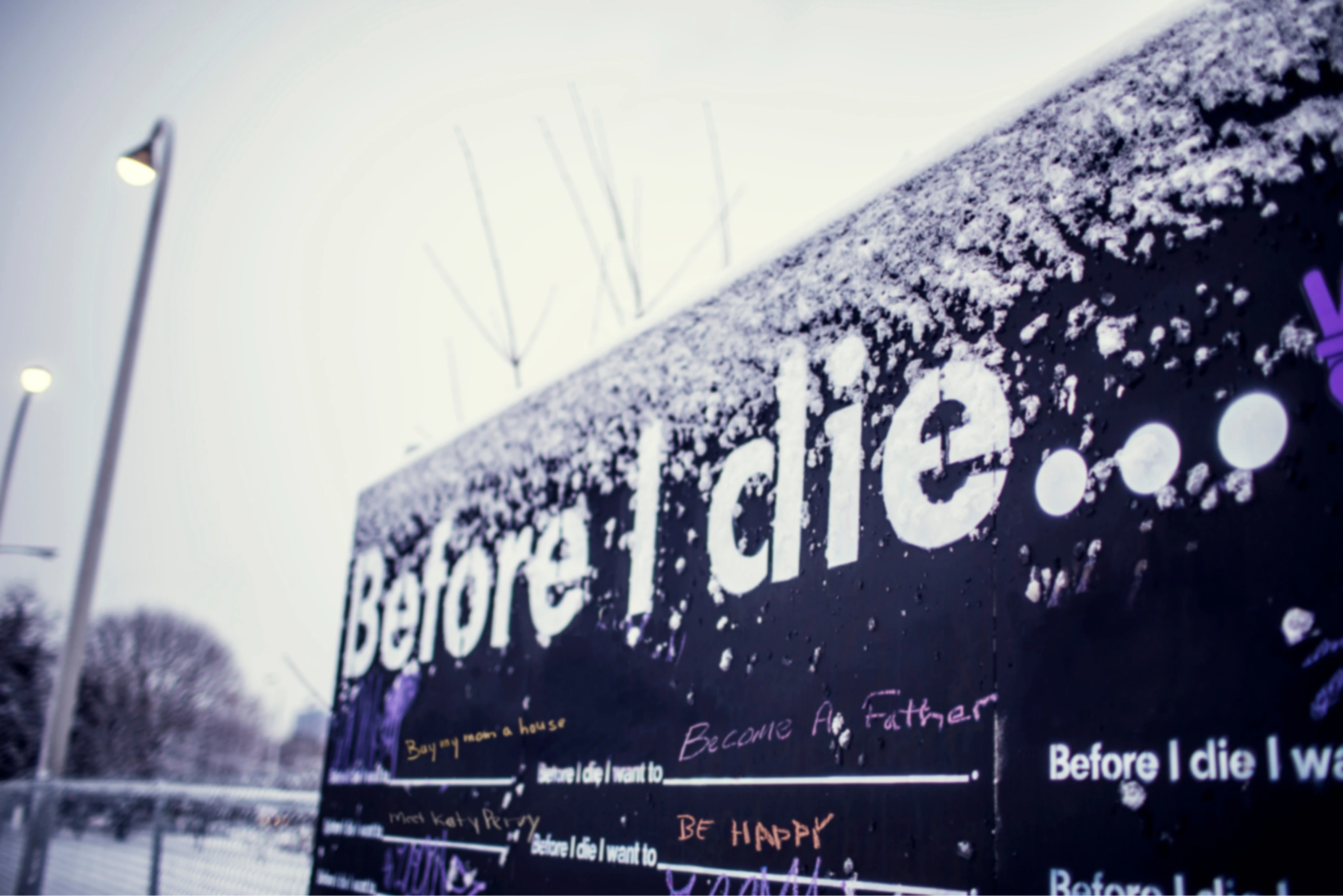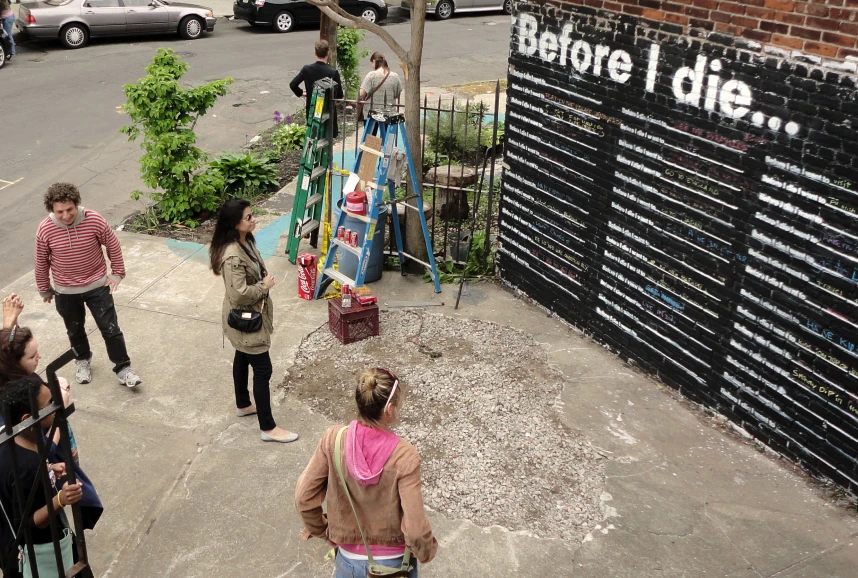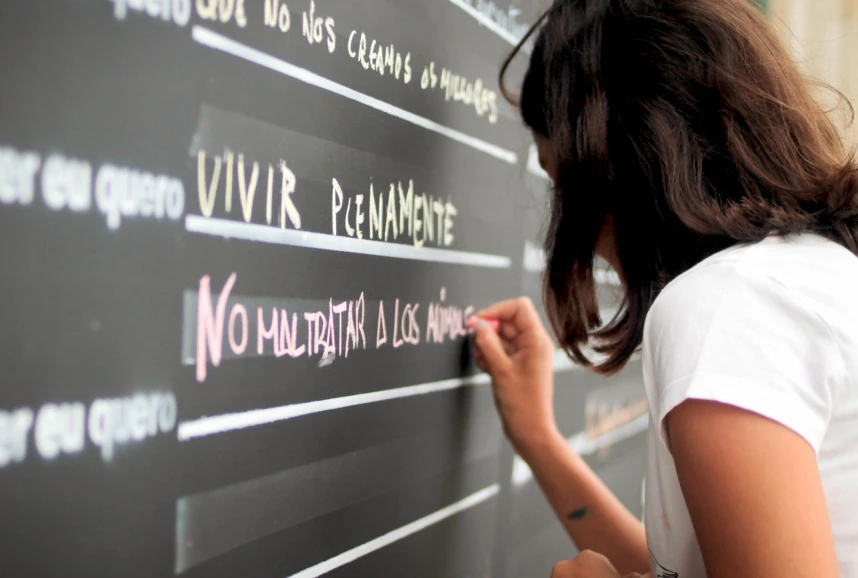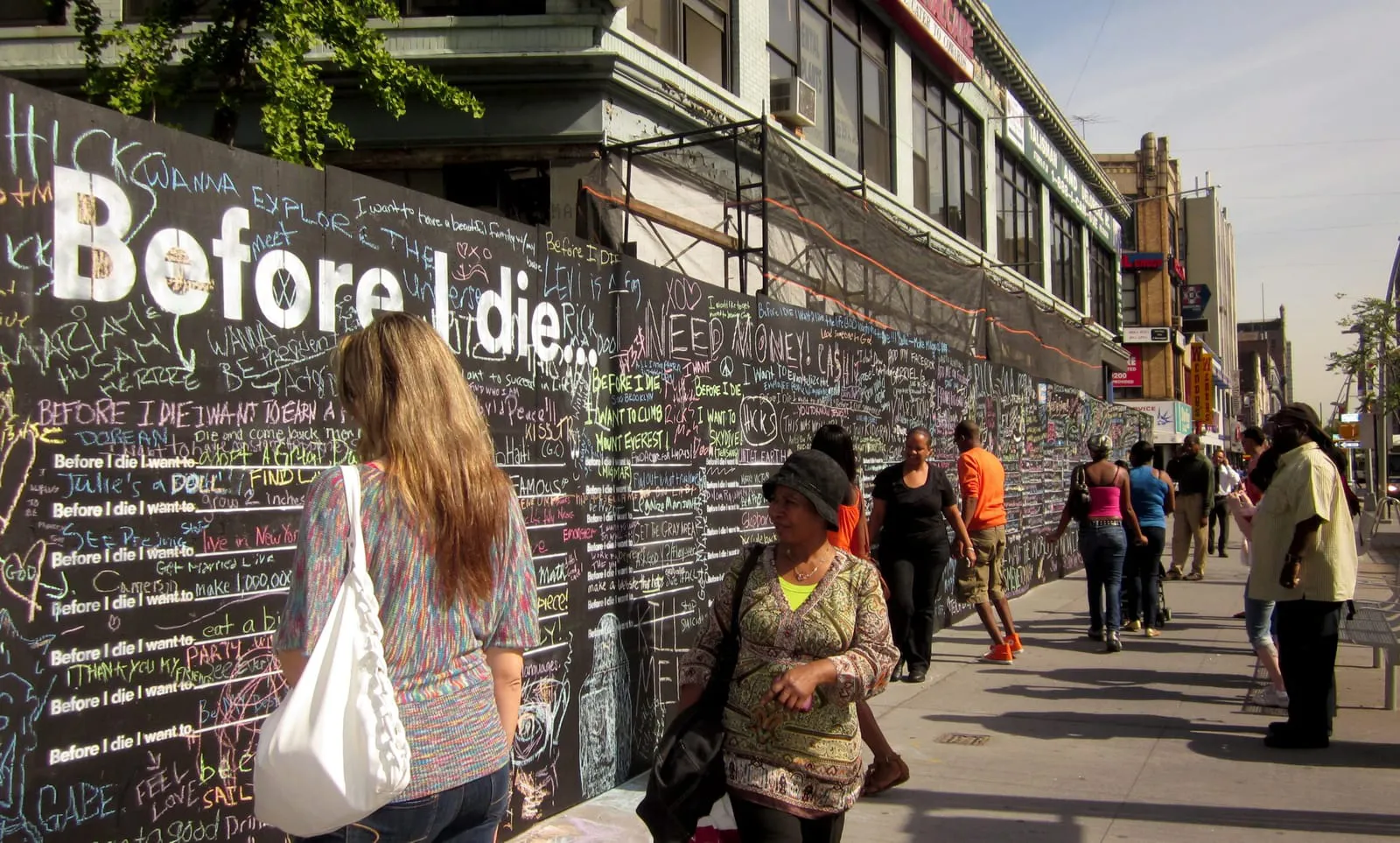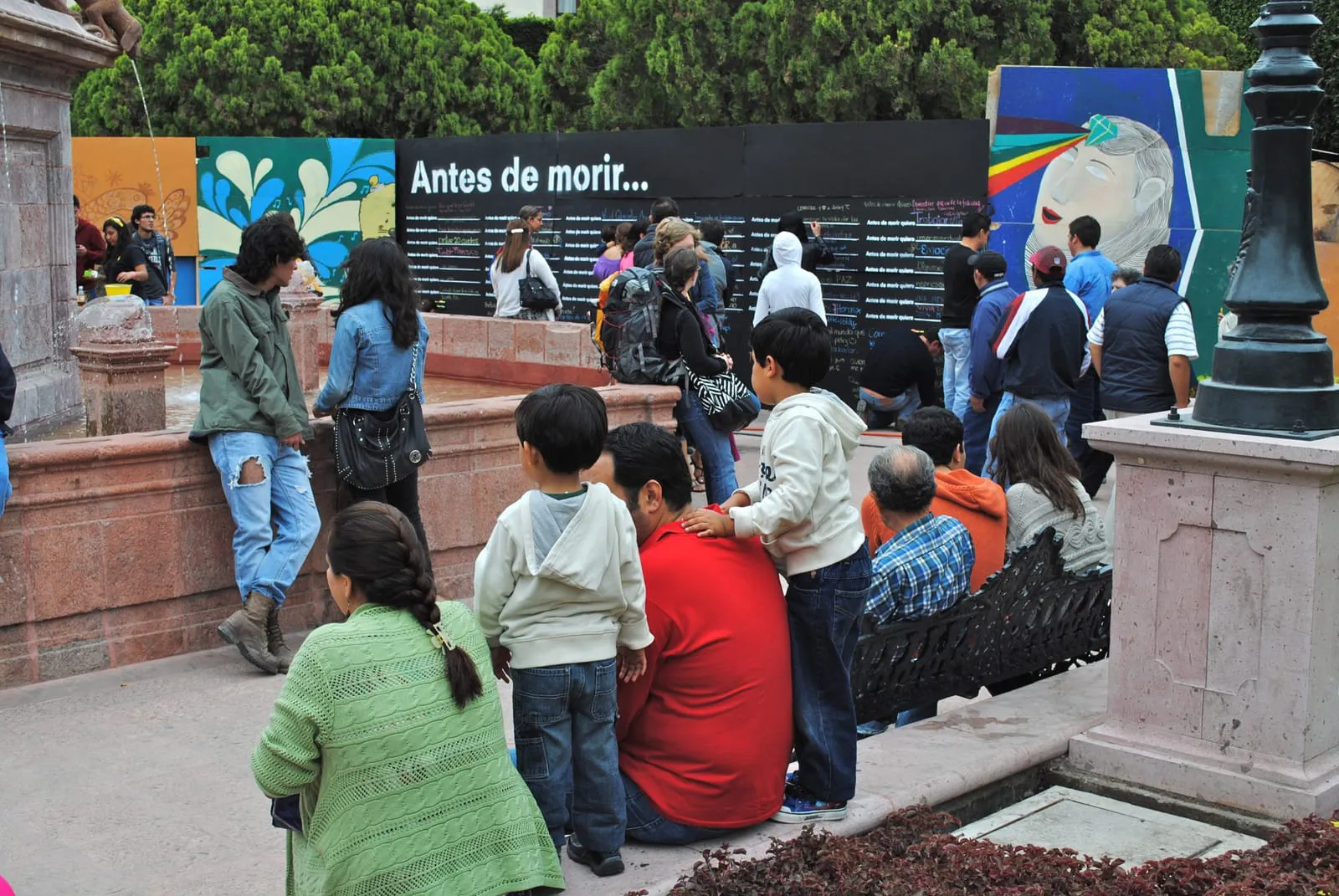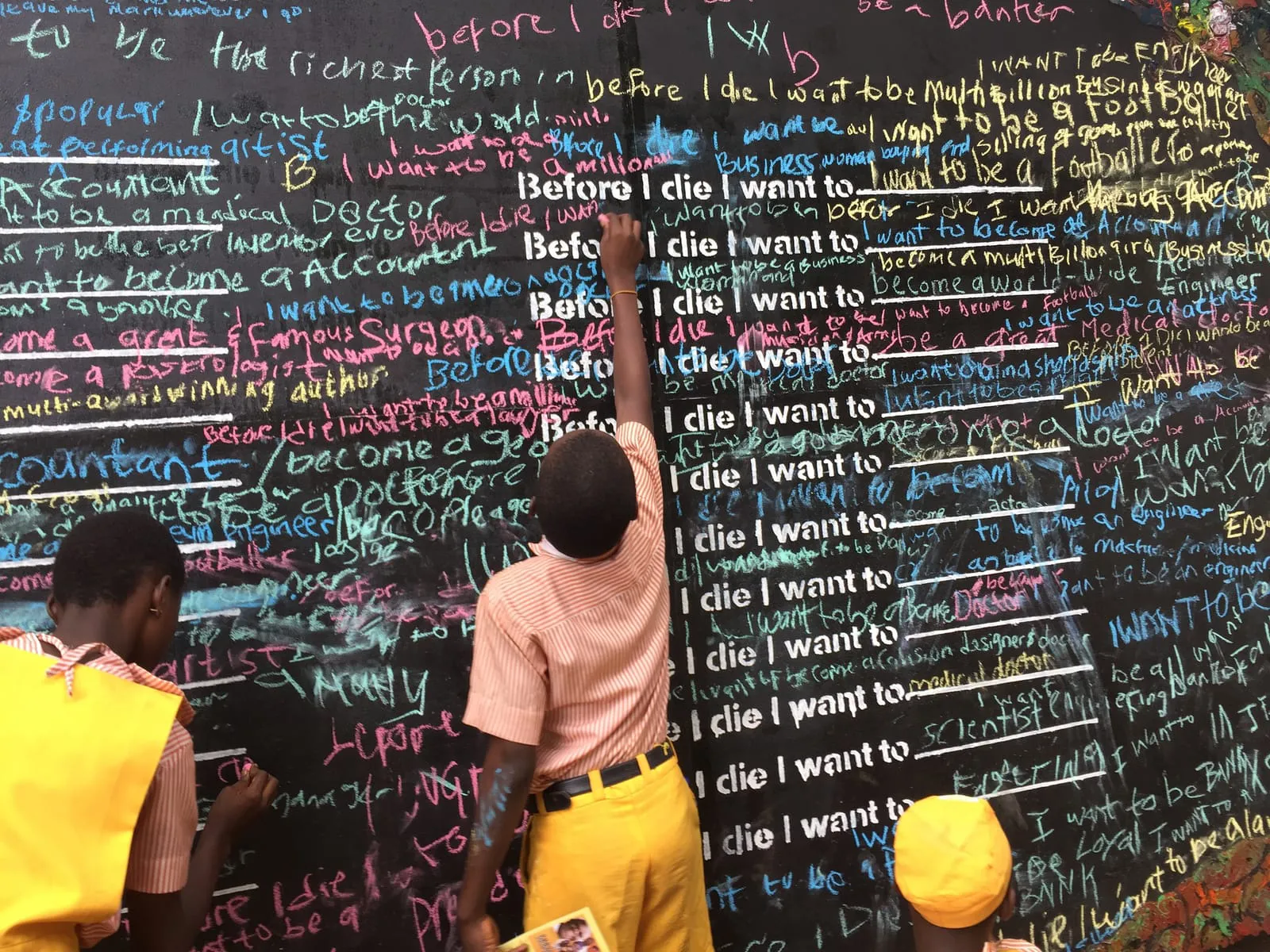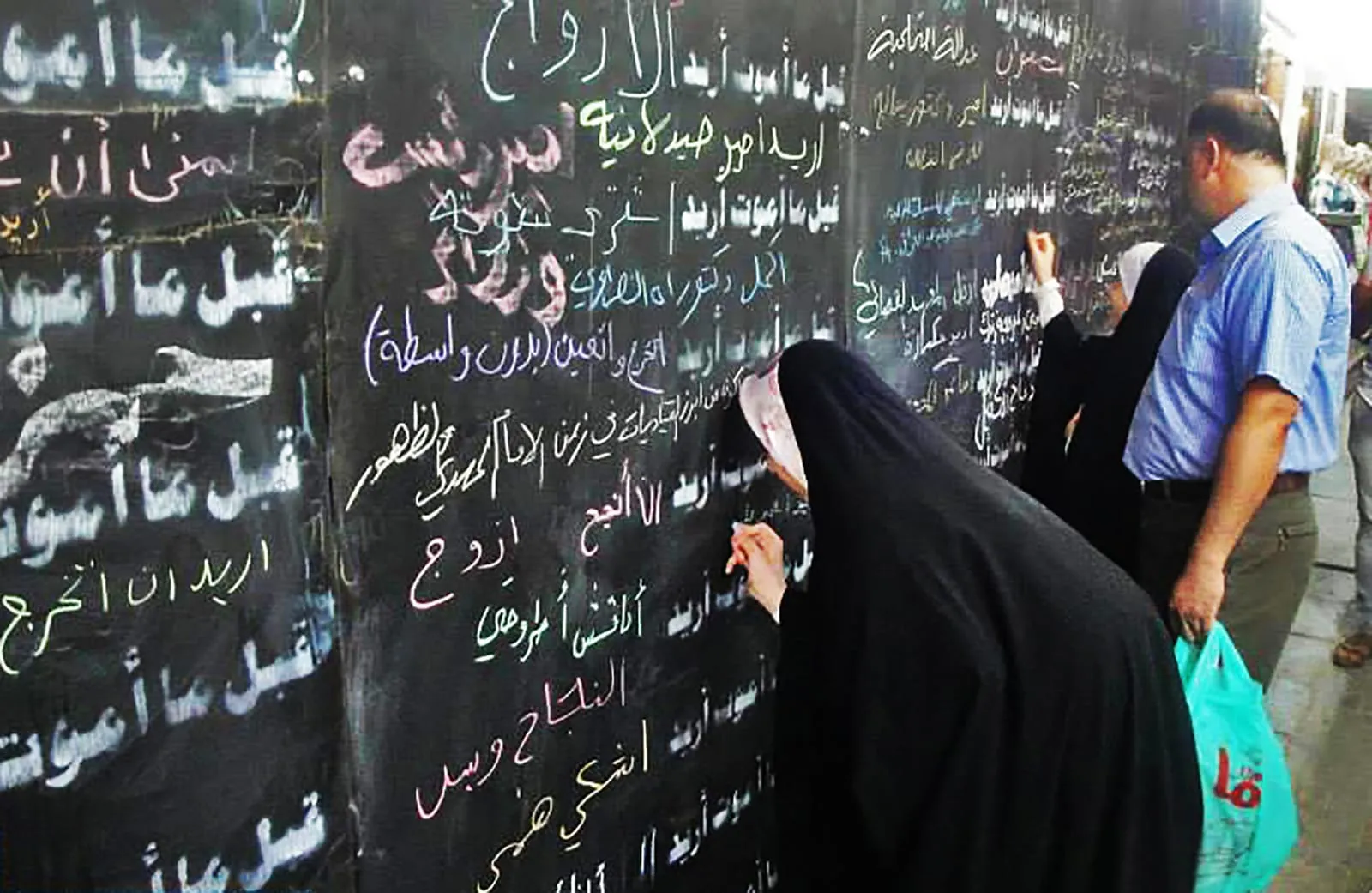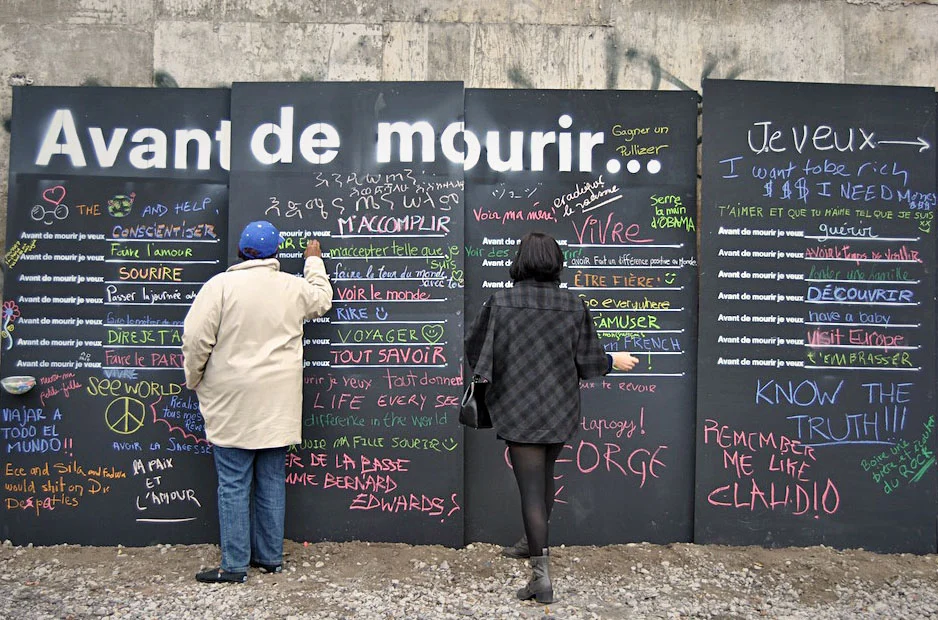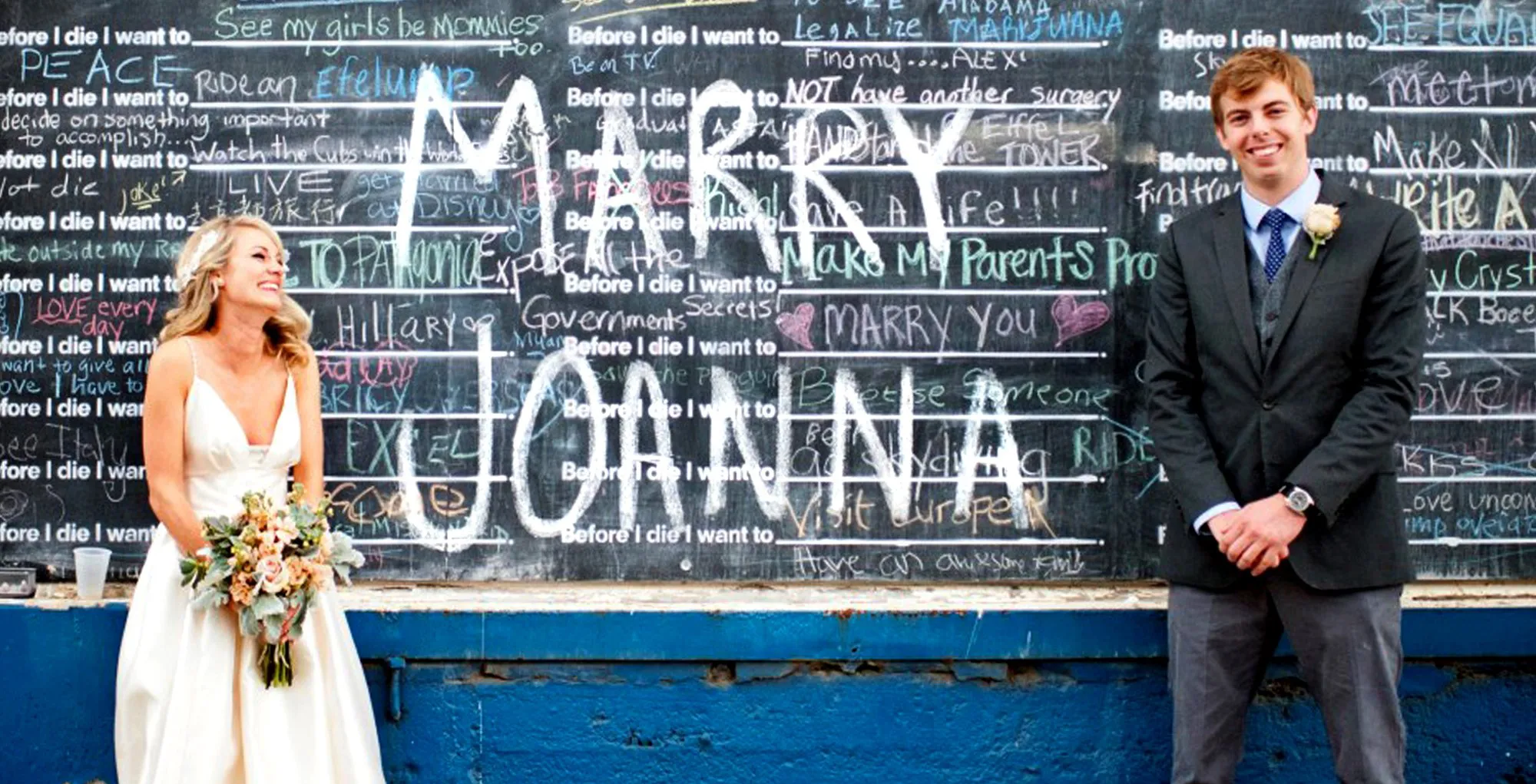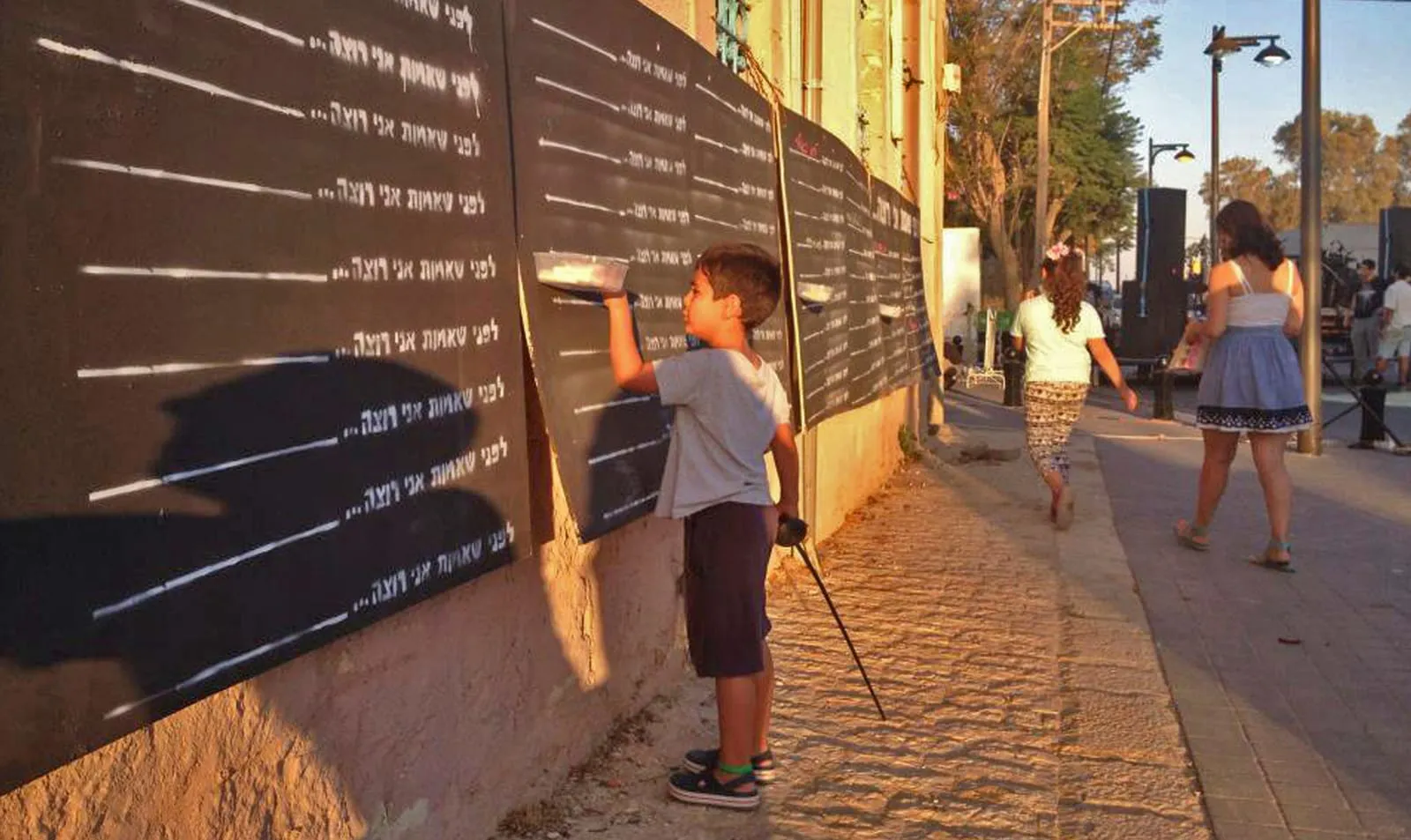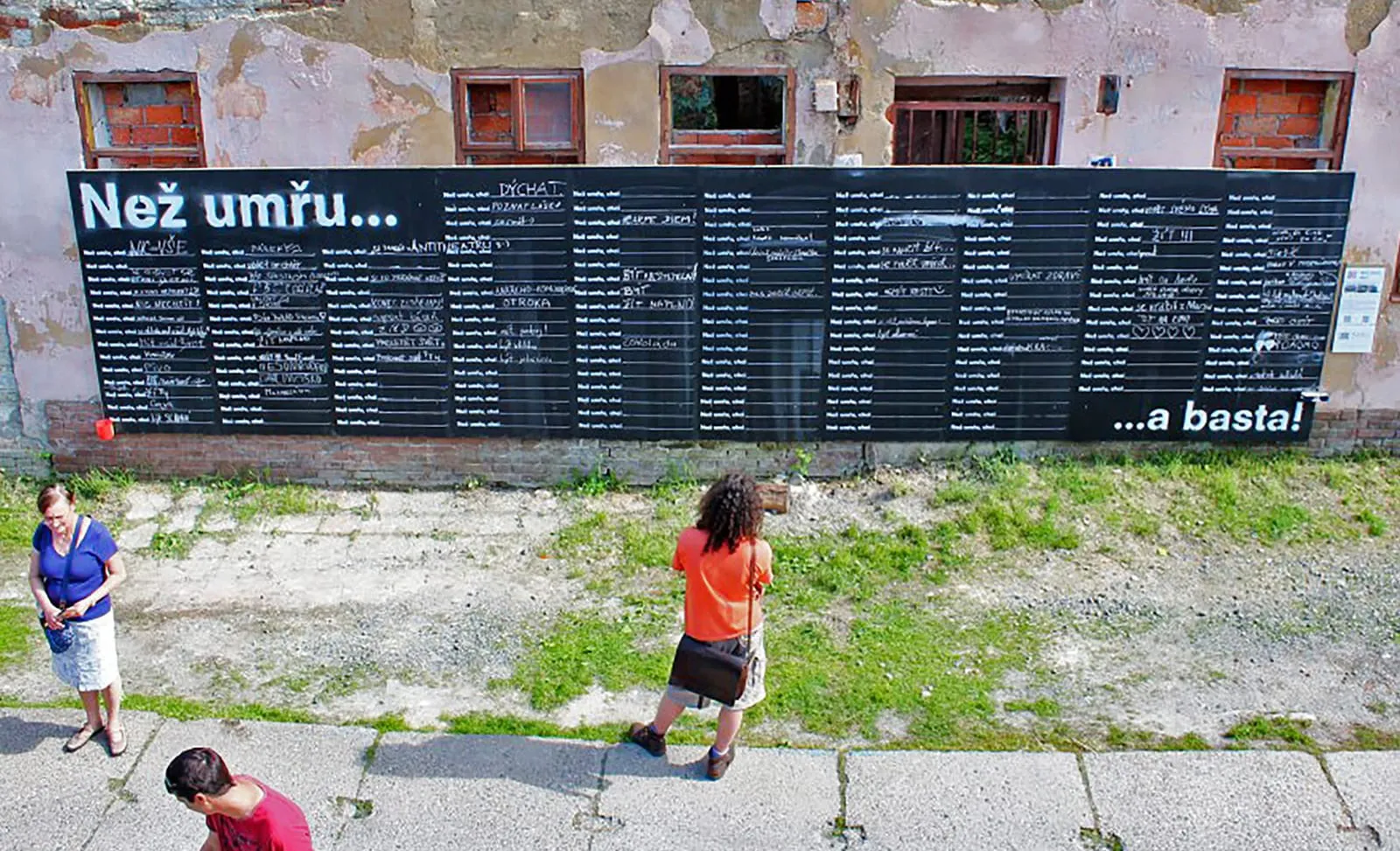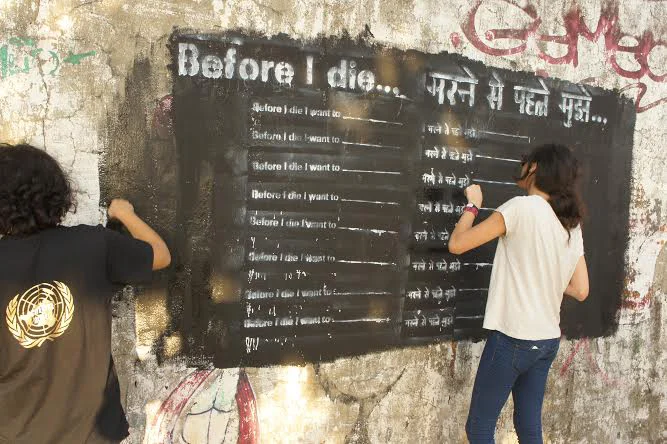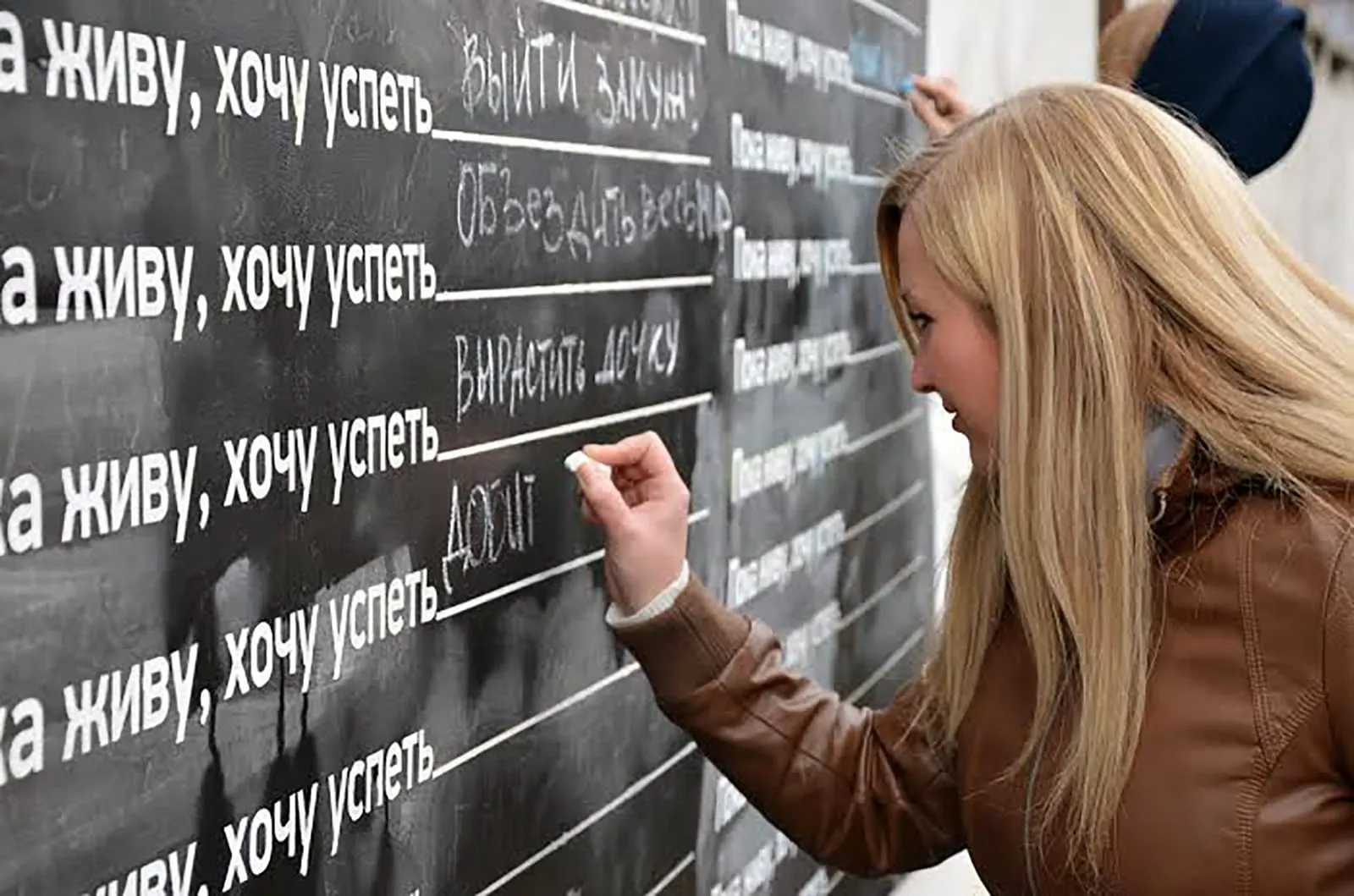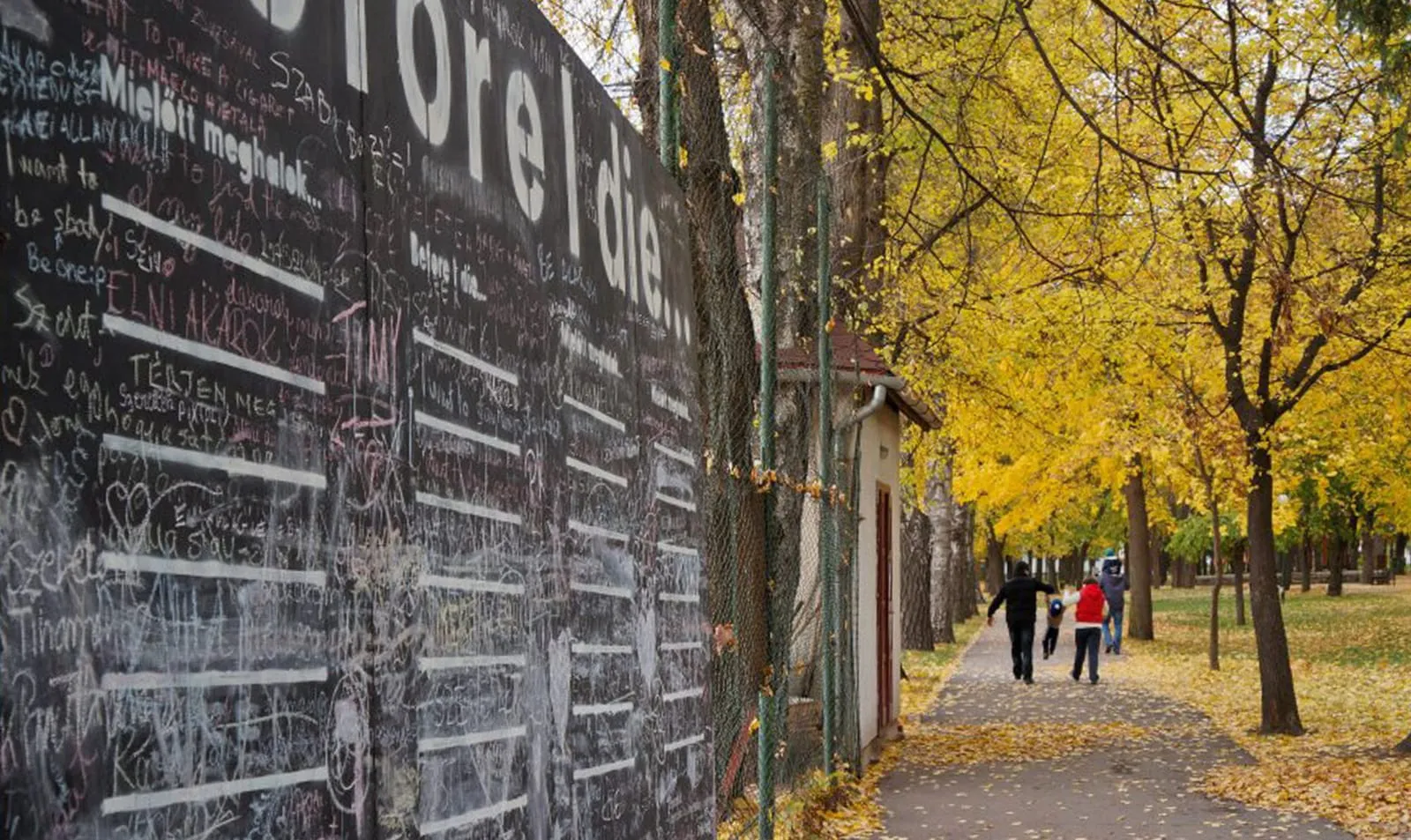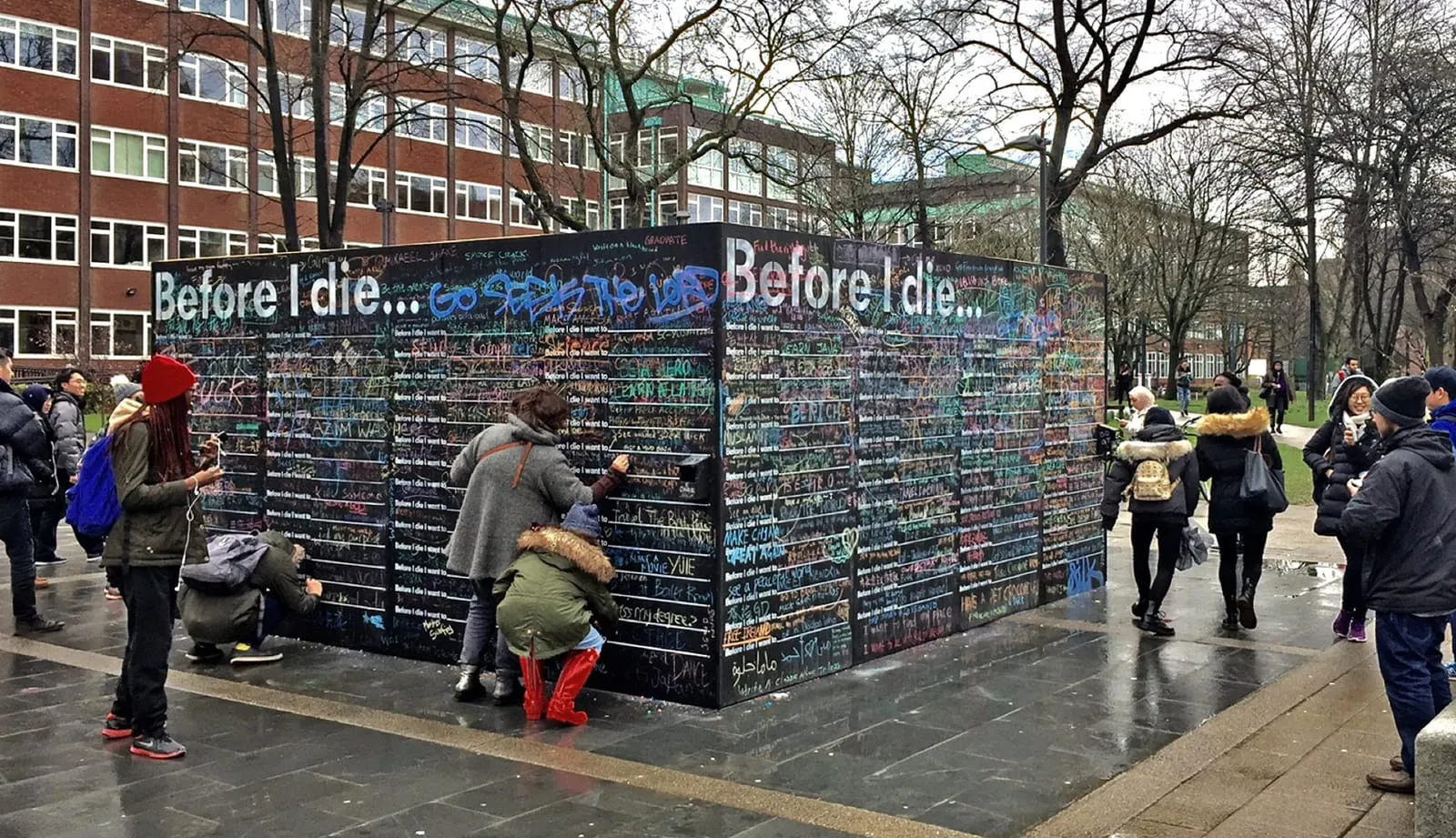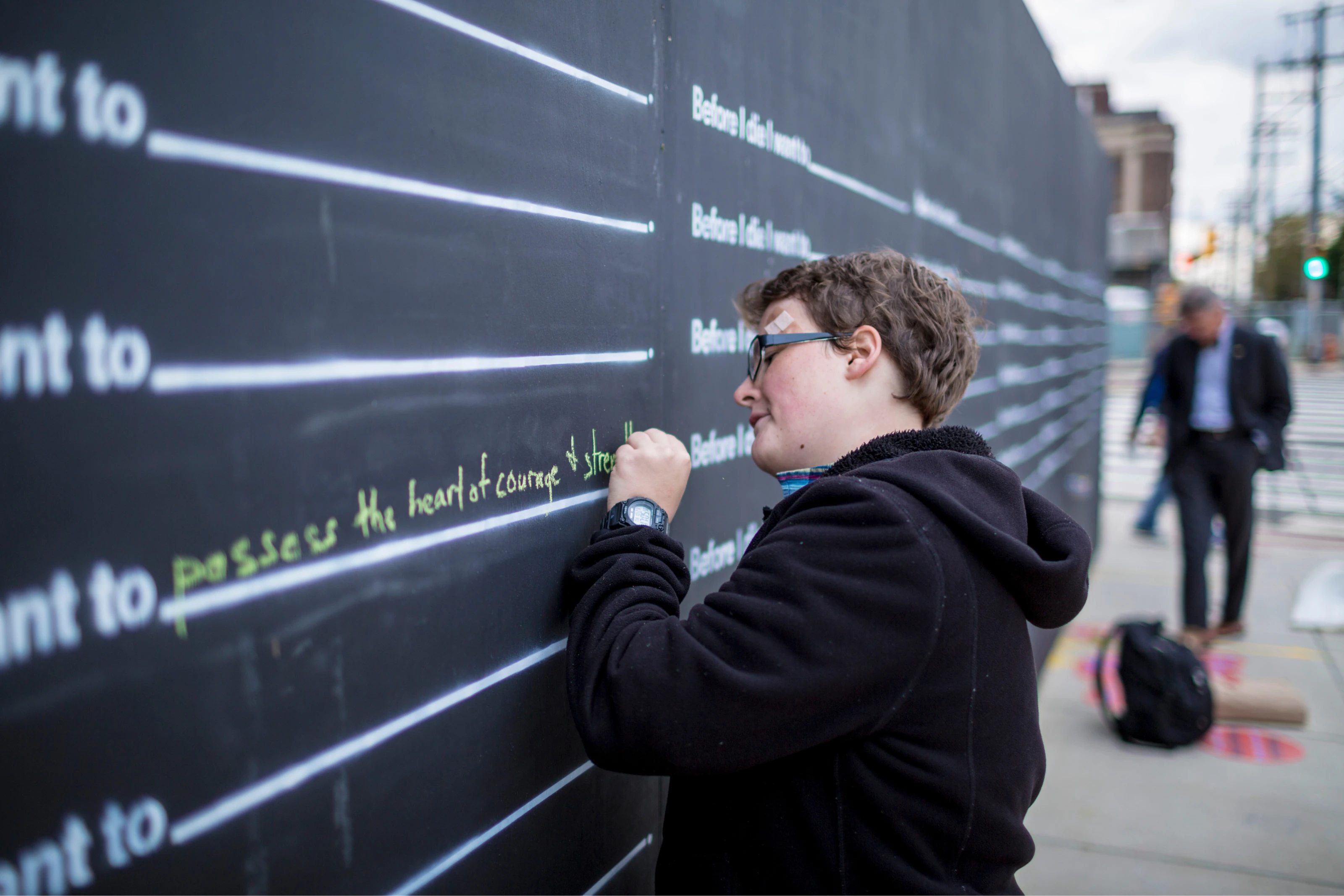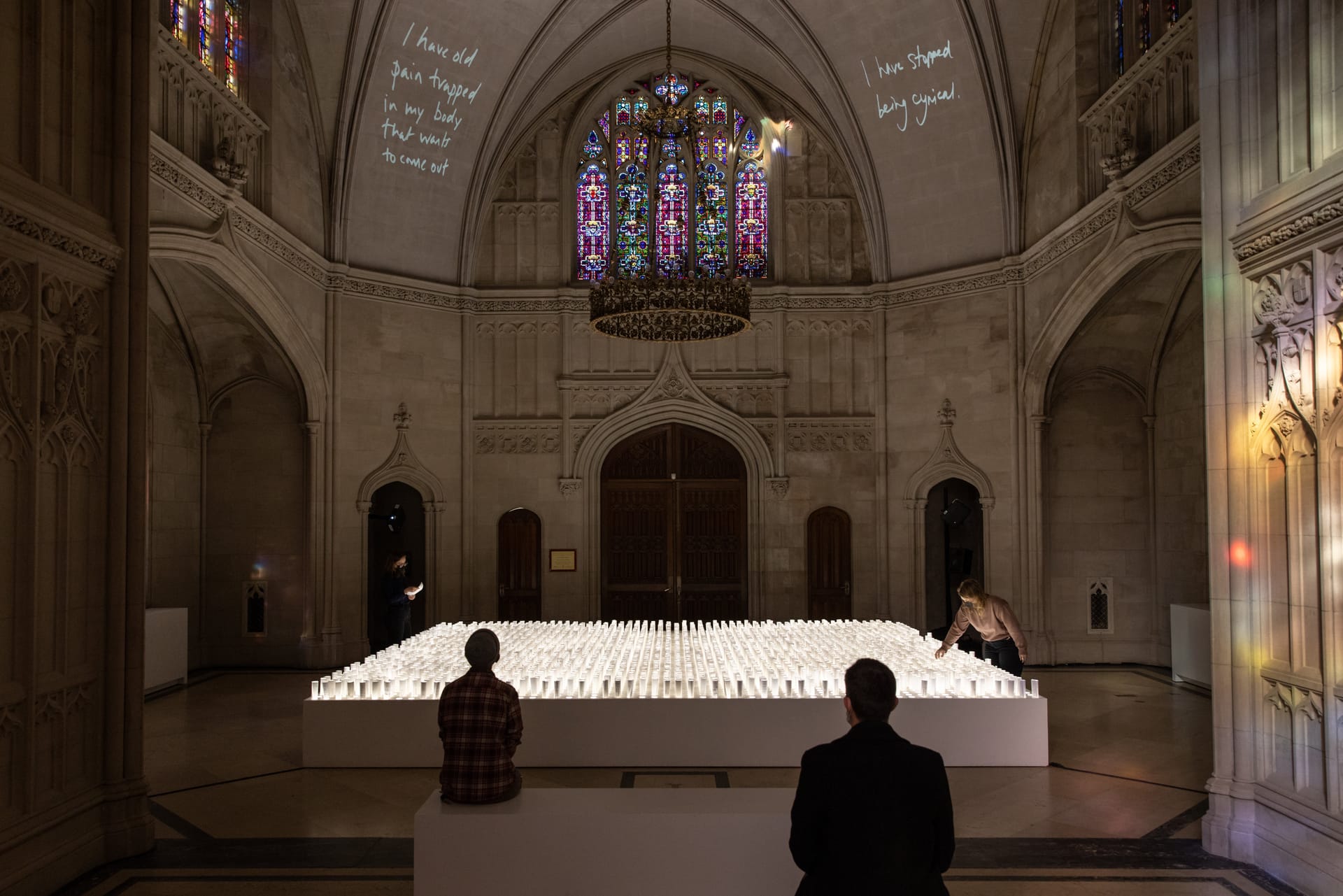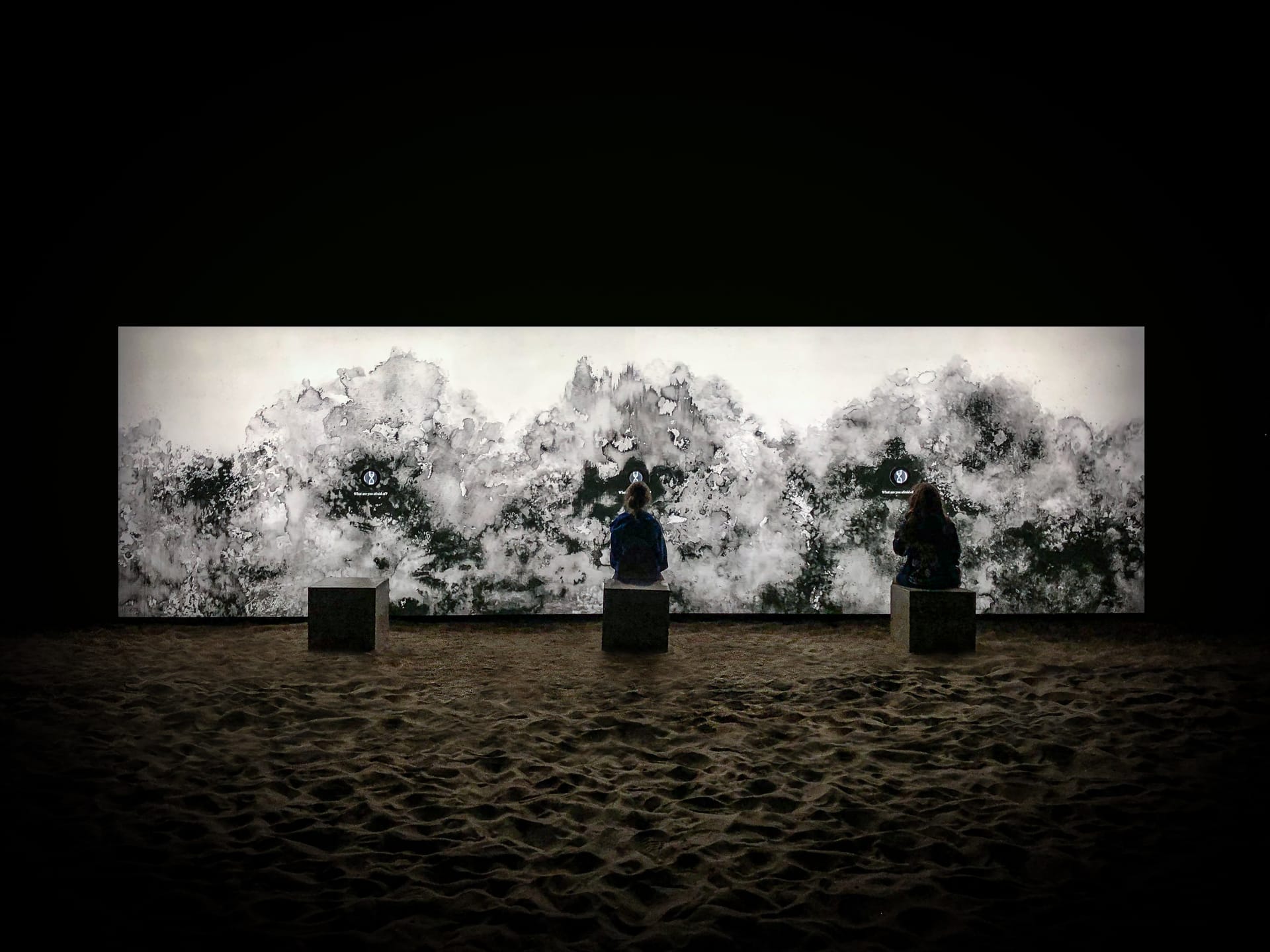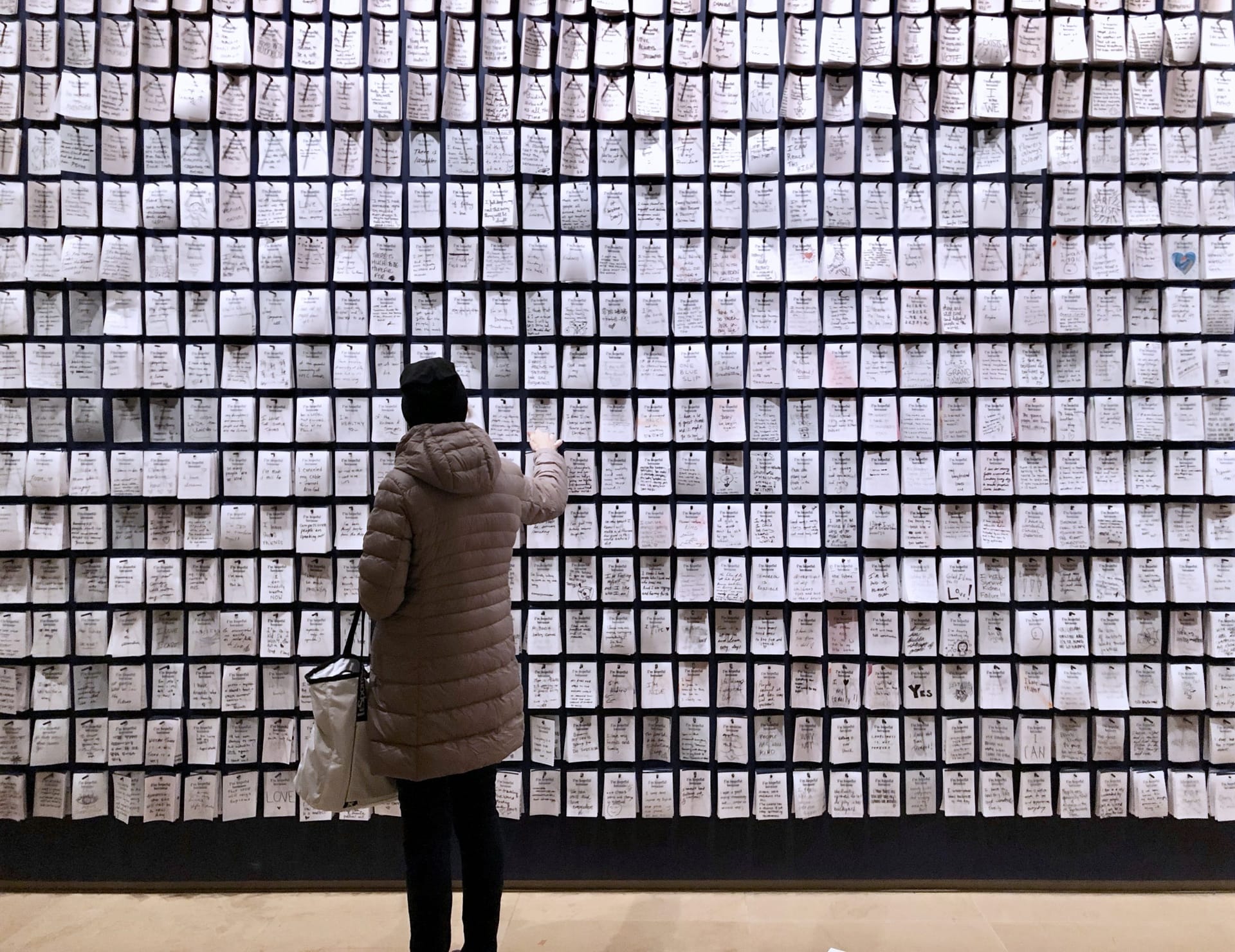Before I Die
Worldwide
Before I Die is a global participatory public art project that reimagines how the walls of our cities can help us grapple with mortality and meaning as a community. Created by Candy Chang in New Orleans after the death of a loved one, this project invites people to reflect on mortality and share their personal aspirations in public.
Thanks to passionate people around the world, over 5,000 Before I Die walls have been created by communities in over 75 countries, including Iraq, China, Brazil, Finland, Kazakhstan, India, and Nigeria. The Atlantic called it, “one of the most creative community projects ever,” and Candy’s TED talk about Before I Die has been viewed over five million times and translated into over 40 languages.
A memento mori for the modern age, each wall is created by local residents who want to make a space in their community to reflect with one another. Each wall is a tribute to living an examined life. And each wall reimagines our relationship with death and with one another in the public realm.
The Story
I never expected Before I Die to go beyond my neighborhood. I created the first wall on an abandoned house near my home in New Orleans after the death of someone I loved. Joan was like a mother to me for fifteen years and there were still so many things she wanted to do: learn to play the piano, live in France, see the Pacific Ocean. Her sudden death sent me into a long period of grief and depression. I grew up secular and felt a shocking lack of instruction or ritual in my life. Everything felt absurd. My inner world felt like it didn't belong outside at all.
I lived a block away from this abandoned house that had been collecting dust and graffiti for years. It looked sadder than me, and it finally crossed my mind that it would break Joan's heart if she knew that her death made me give up. I wondered if I could do something to honor her and reflect on mortality.
I made a homemade stencil that said “Before I die I want to _____.” With help from old and new friends, I painted the side of this crumbling house with chalkboard paint and stenciled it with this prompt, so anyone walking by could pick up a piece of chalk, reflect on death and life, and share their personal aspirations in public. In my mind it was just another experiment and I didn’t know what to expect. Because it was cheap to make, I thought it was no big deal if it didn’t work out.
The next day, the wall was entirely filled out and it kept growing.
Before I die I want to... get my wife back, overcome addiction, forgive my parents for their shortcomings, eat more everything, see a woman become president, be the man she believes I am, build a school, make a livable wage, see the leaves change many times, see him one more time, see what I'm like as an old man, evaporate into the light...
I saw my neighbors in a new light, and the wall became an honest mess of longing, fear, insecurity, gratitude, humor, pain, and grace. I remember the responses that resonated with me most were the heartbreaking ones, the devastating ones, the ones you wouldn’t typically tell a stranger. They made me feel less alone and gave me courage to face my own struggles. And it taught me the value of anonymity. When we anonymously share without fear of judgment or desire for recognition, what emerges looks profoundly different and more honest than performative digital forums.
This neglected space became a constructive one, and people who ordinarily had little to do with one another began taking care of it. People donated chalk. People helped me wash down the wall when it was completely full. Neighbors introduced themselves in front of the wall while reading through the day’s responses. The grandmother who lives across the street said, “People are around all the time. The block is safer now.”
There were a handful of wise-ass comments. The world will always have boys who want to draw dicks in public space, but people erased them—it’s chalk!—and they were profoundly eclipsed by thousands of sincere responses that made me feel close to my community in a way I never felt before. Introverts like me could share just as much as the extroverts. I also learned that when the wall begins with a few thoughtful responses, it can set the tone and the way others share.
Ten months later, the wall in New Orleans ended for happy reasons: a new owner bought the property and the house became a home again. But this wasn’t the end of the project: I received hundreds of messages from people around the world who wanted to make walls with their communities. I enjoyed traveling everywhere from Almaty, Kazakhstan to Querétaro, Mexico to make walls with students, arts organizations, and residents. However, I couldn't keep up with the requests, and I quickly realized I wasn't needed. The beauty of the project is its simplicity.
So I made a step-by-step guide for anyone to make their own wall. And today, thanks to passionate people around the world, over 5,000 Before I Die walls have been created in over 75 countries and over 35 languages.
It’s been one of the greatest experiences of my life to see this little experiment grow into a global project, a kind of memento mori for the modern age. It’s easy to get caught up in the day-to-day. Contemplating death is the quickest way to crush the trivial, restore perspective, and redefine what’s meaningful to you at every age. People have asked if they can remix the project, and I say yes please feel free—ideas come from other ideas, so people have made all kinds of walls, including When I graduate I want to..., I love Heraklion because..., Happiness is..., I go downtown because..., Lebanon would be better if...
I am continuously inspired by everyone's walls - please email me photos! - and this project sparked my life-long interest in the future of ritual in public life. I crave shard spaces to commune over existential questions without the requirement of shared doctrine. It feels even more pressing as we grapple with epidemic loneliness, deepening polarization, online judgment, and the disembodiment that comes from living behind screens. How can we create emotional infrastructure that speaks to the pains of our age? It not only serves fundamental needs of the human spirit, it cultivates a sense of belonging, which is vital for civic life.
—Candy Chang
Participate
Thanks to thousands of people, the Before I Die project has become a global movement with over 5,000 Before I Die walls created in over 75 countries and over 35 languages.
If you’d like to build a wall, thank you for your interest! Please read through the information below to learn about the aim of the project, as well as find answers to some frequently asked questions. Then download this toolkit of resources, which includes a checklist of materials, a step-by-step guide, options to buy readymade stencils, and templates if you prefer to create your own. Together, we can help destigmatize the discussion of death and create public spaces that reflect what matters most to us as individuals and as a community.
I believe every community should have a Before I Die wall, so this concept is free for everyone to use. You do not need any additional permission from me, but if you do make one, I would love to hear about it and see photos! Email me here. I hope you’ll follow a few simple guidelines and read through the FAQ below.
- Be free. A Before I Die wall should be accessible for everyone.
- Before I Die is not an advertisement. A Before I Die wall should be free of giant logos, blaring website addresses, hashtags, etc—there’s too much of this in the world. However, you are more than welcome to feature a placard or sign next to your wall that includes a project description and all of the credits, including all organizations and people who helped create the wall, website addresses, etc. You’ll find a sample placard in the resources, but feel free to make your own.
- Please keep the word ‘die’ in Before I Die. When we become comfortable talking about death, we can change the culture around it, from one that is full of death denial to one where we confront mortality in a way that compassionately prepares us as individuals and as a community.
- Stencils: Readymade stencils can be found here and here (we do not profit from these purchases), or you are welcome to make your own based on the templates in the toolkit. If you have any questions or need other languages, please email me. Also, I'm never on social media so please email me photos! I would love to see your walls.
